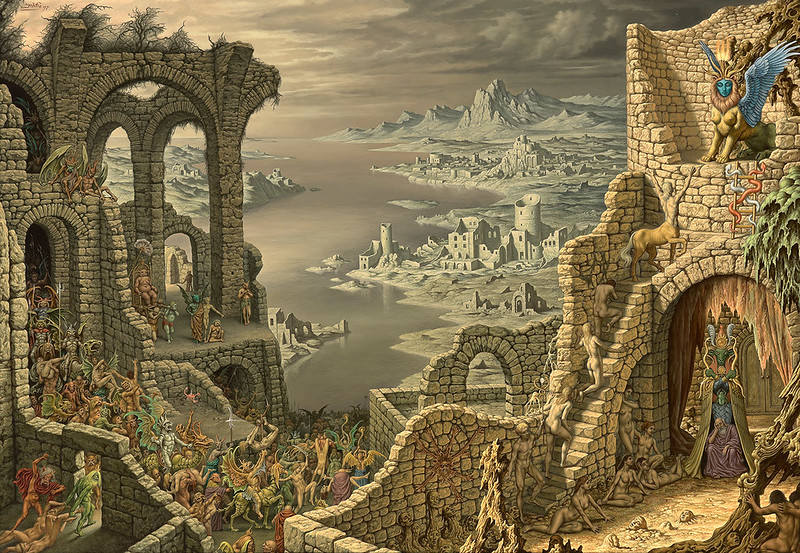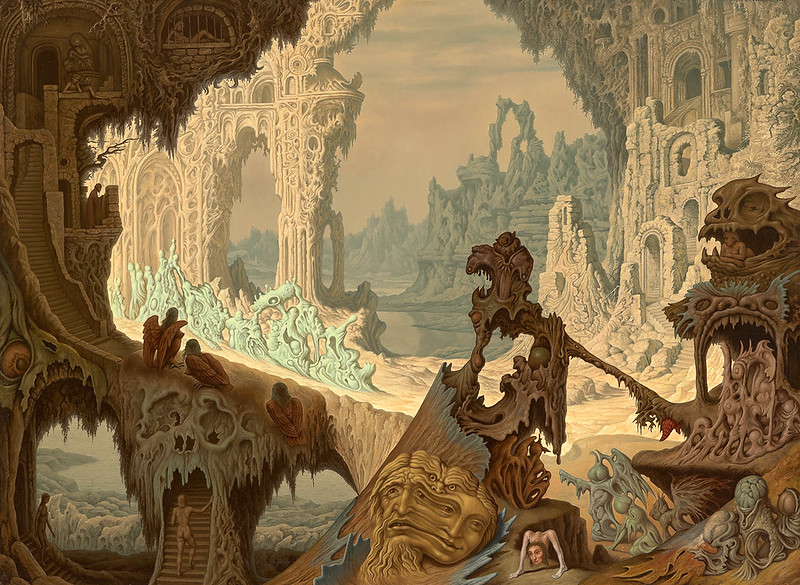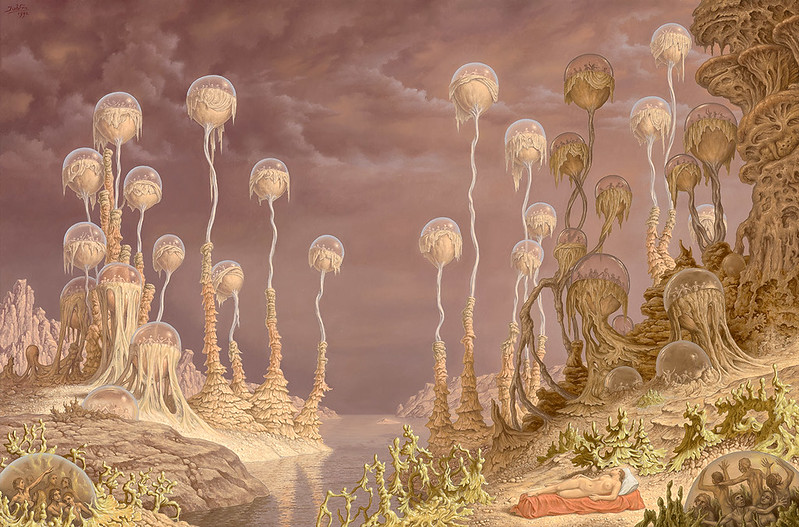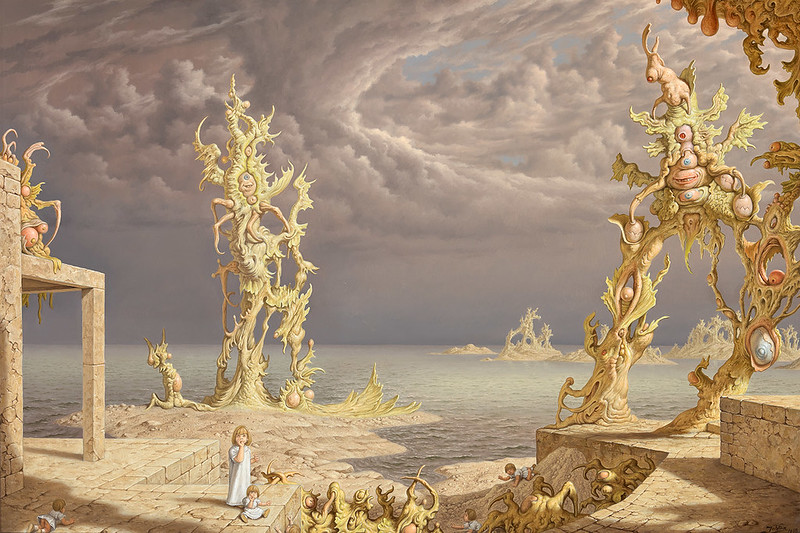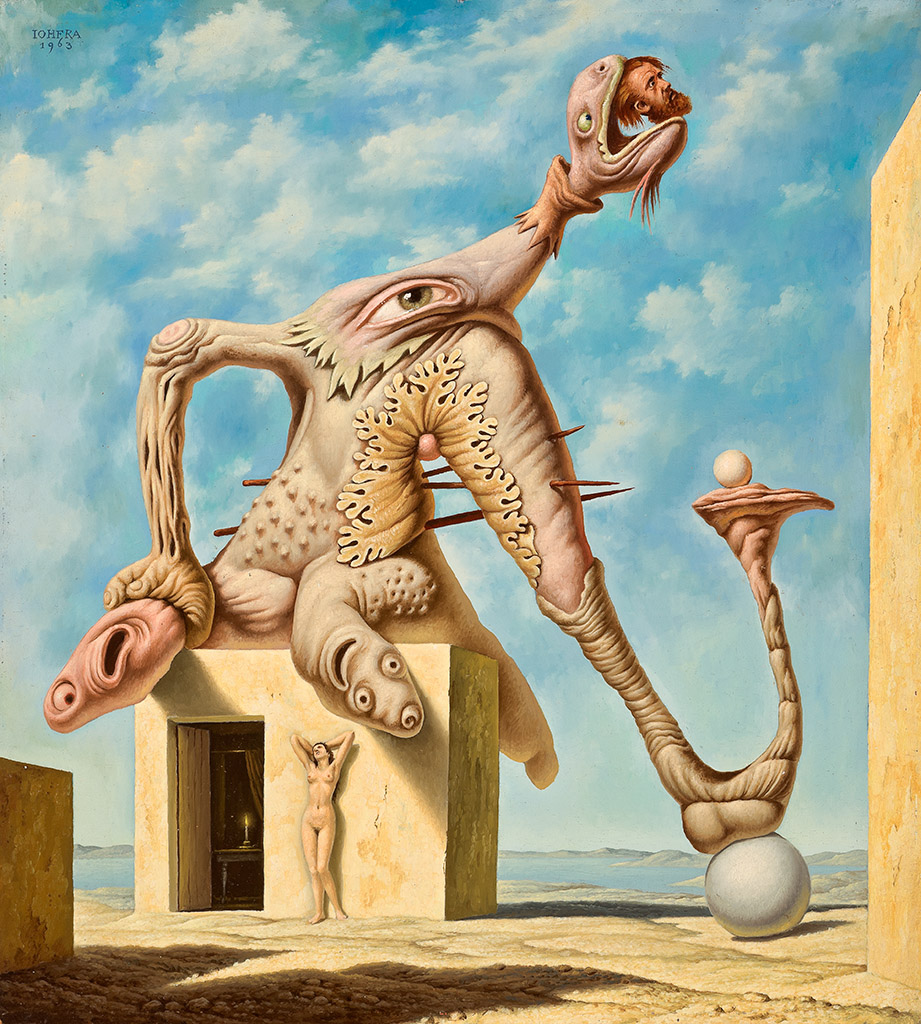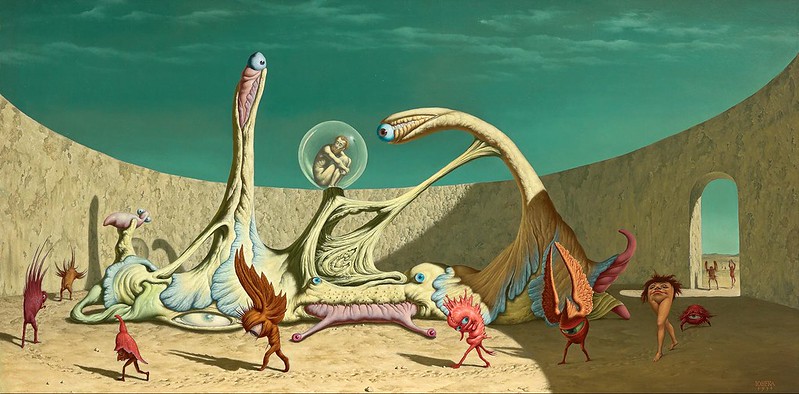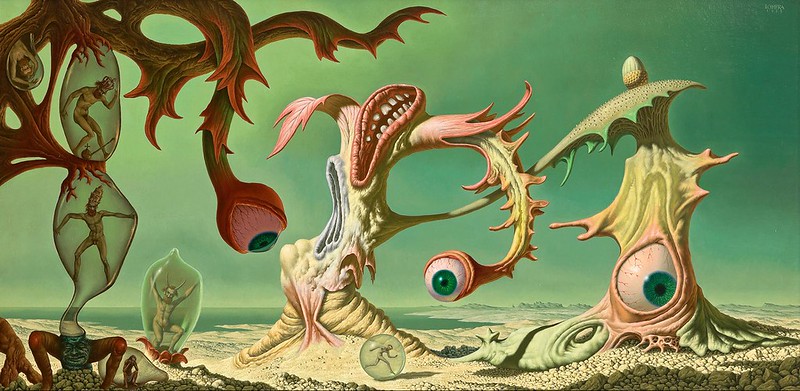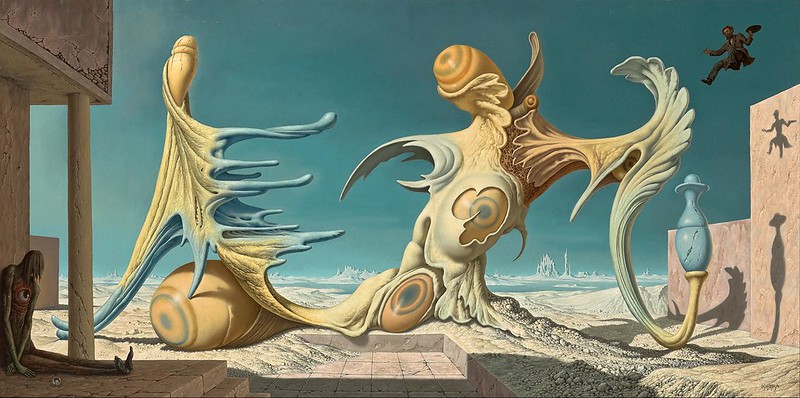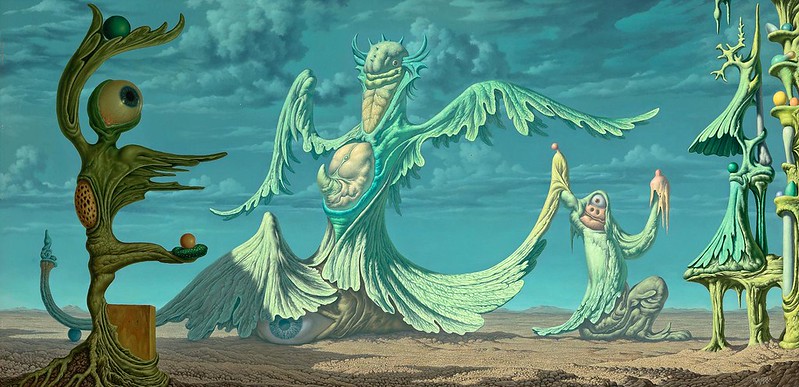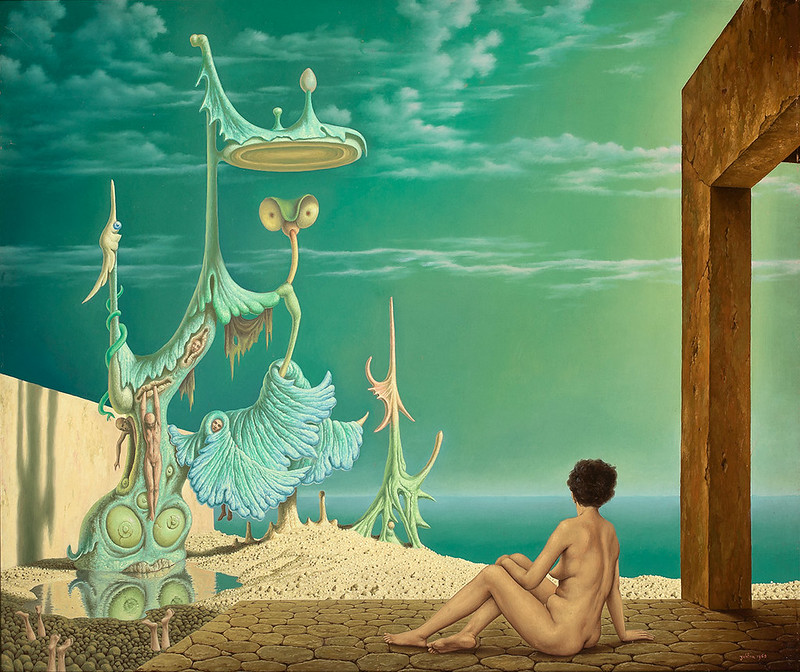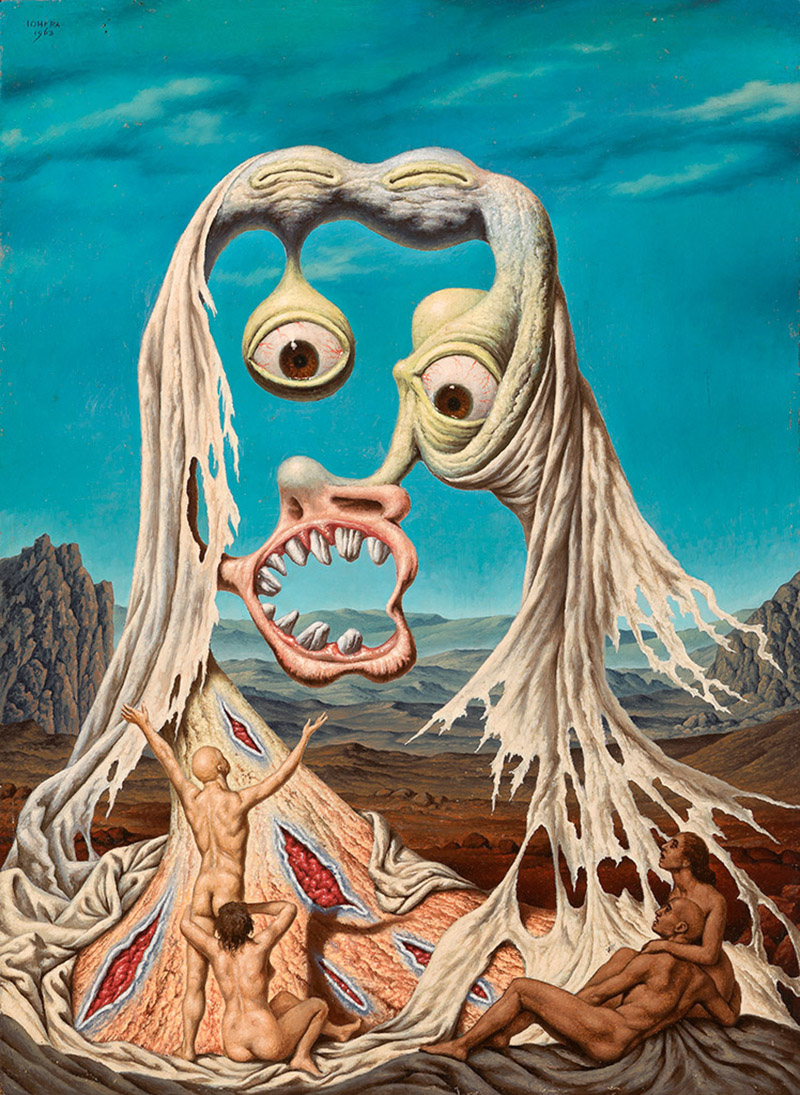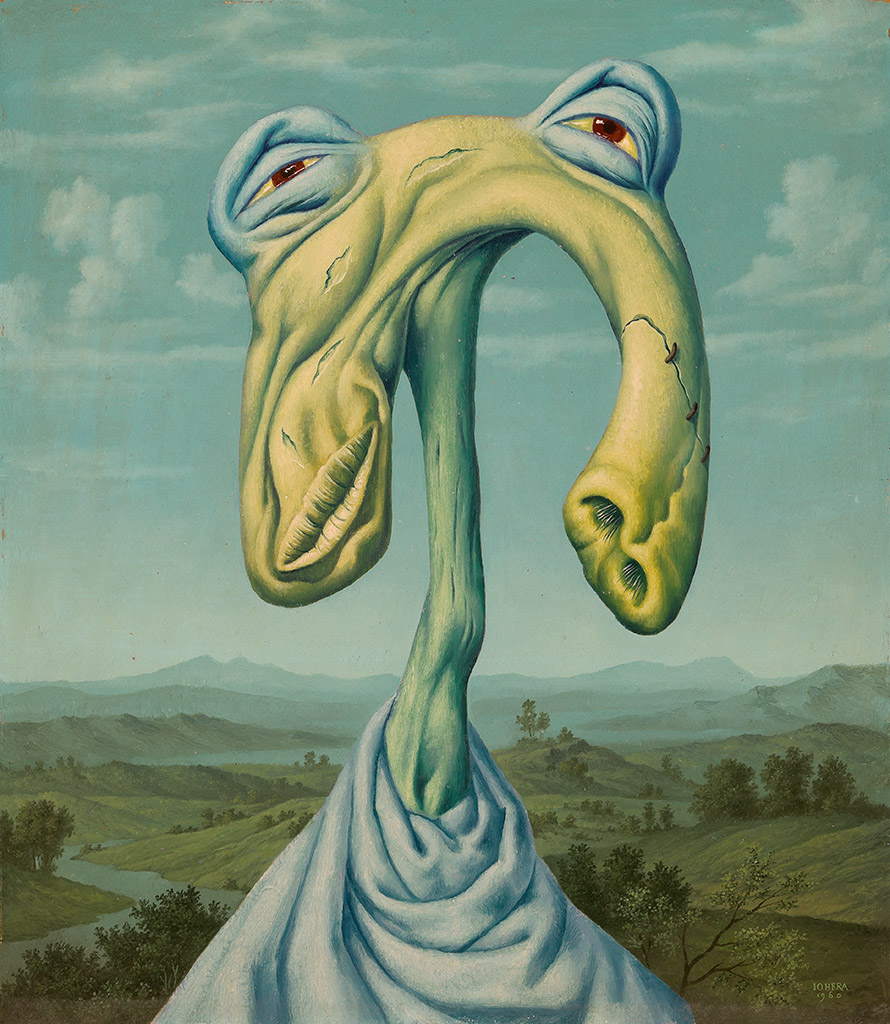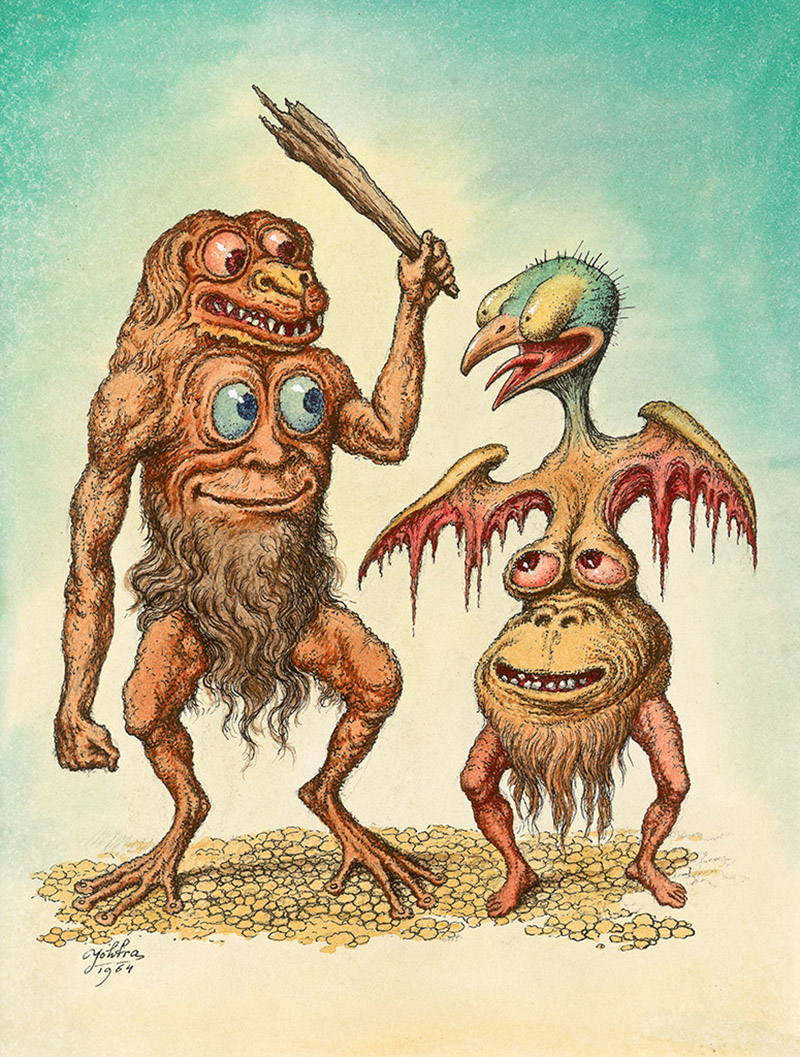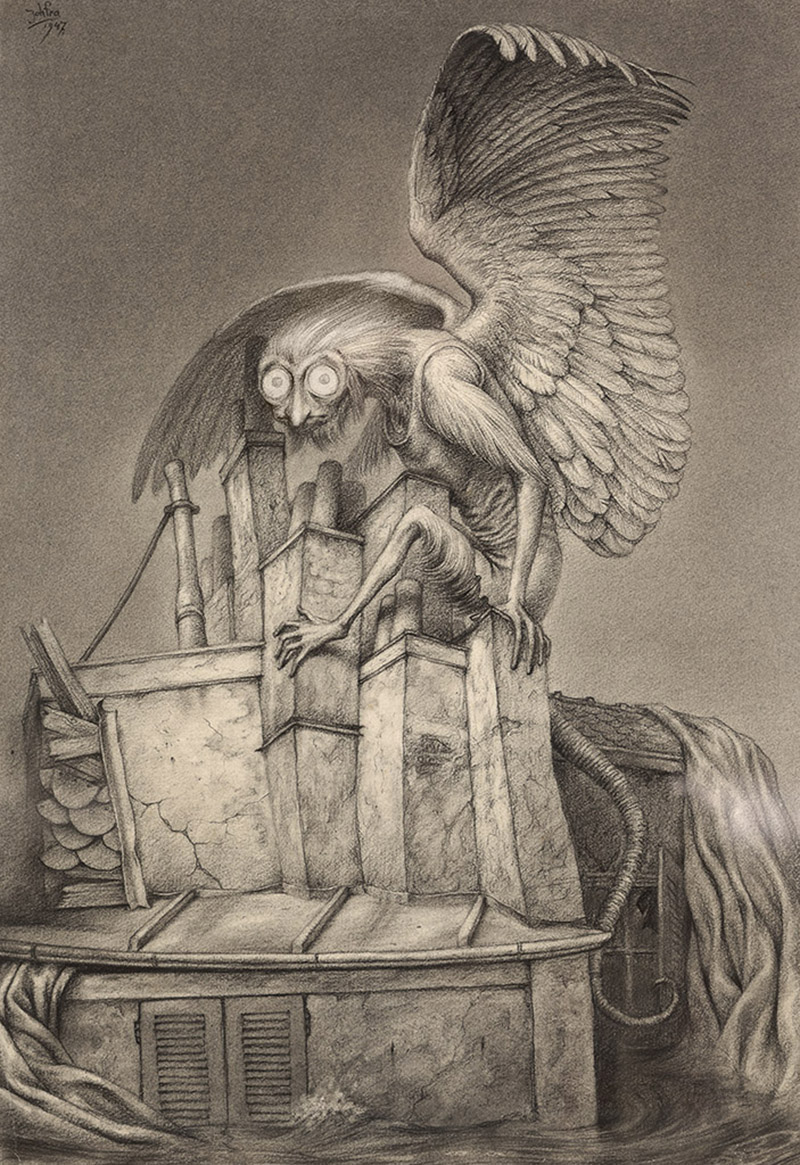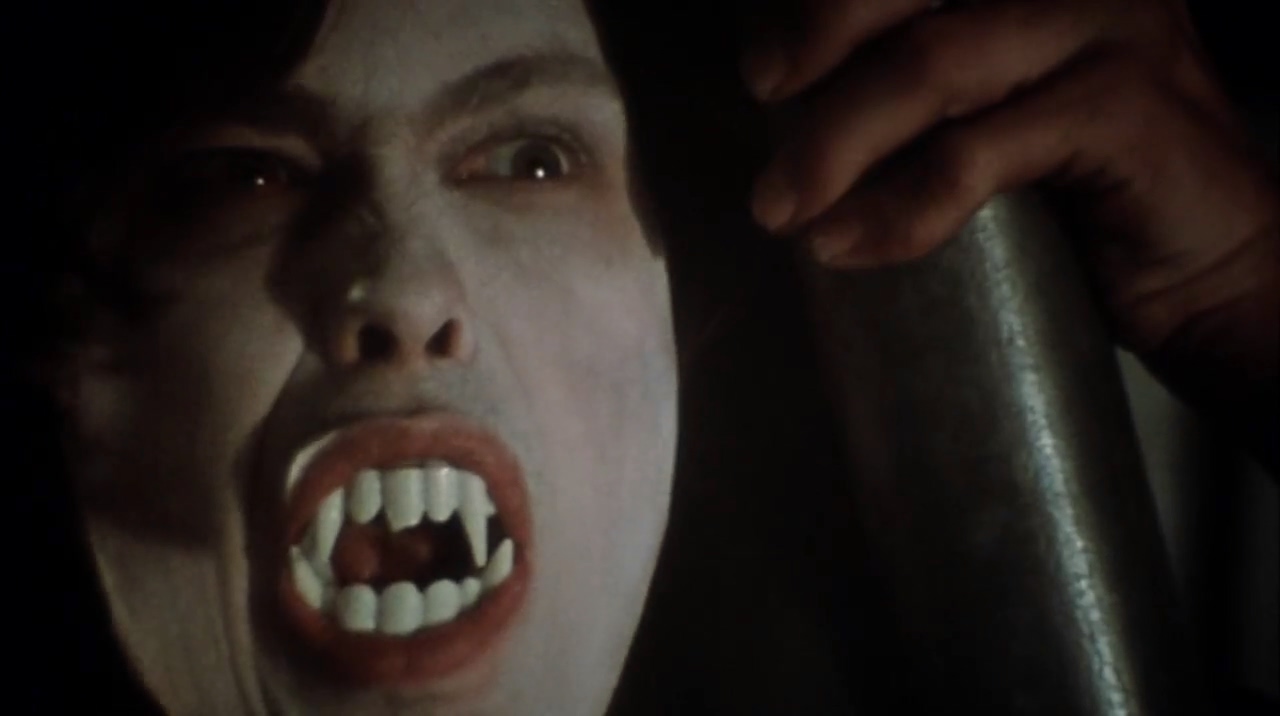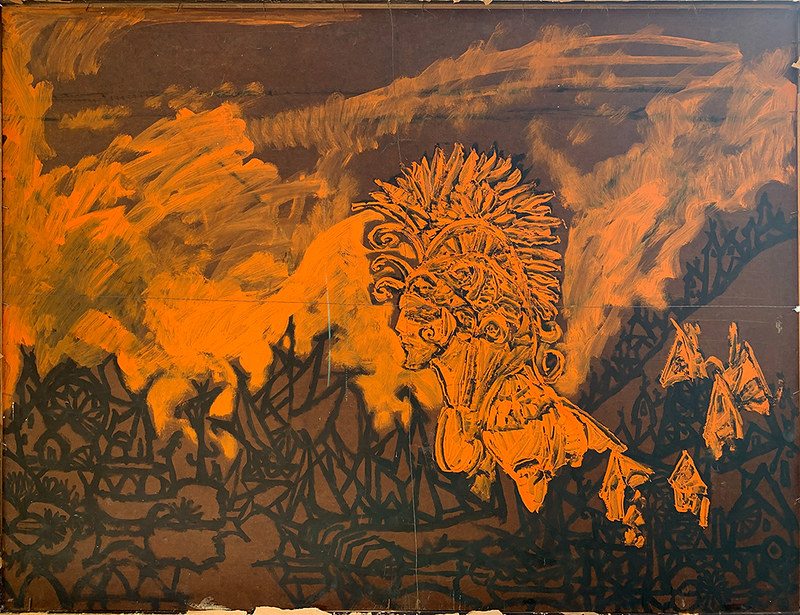Feed aggregator
Kickstart Your Weekend: The Night Companion
LAST BIG PUSH!!
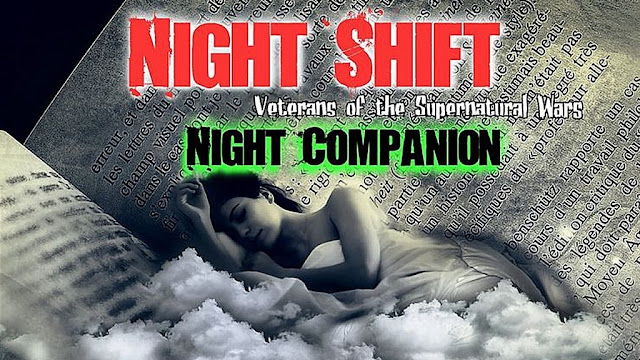
https://www.kickstarter.com/projects/jasonvey/the-night-companion?ref=theotherside
This sourcebook for Night Shift: VSW RPG blows the doors off! New classes, species, magic, monsters, core system options, and more.
Night Shift has been a labor of love for Jason Vey and I. It has been a chance to use the rules we love (Old-school D&D) and bring it to a modern supernatural setting like the licensed products we have worked on in the past. If you liked any of my work regardless of the system used then this is a great fit.
Here is what the book is right now:
- Four new character classes: the Divine Warrior, the Mystic Martial Artist, the Psychic Gunslinger, and the Spirit Rider
- Rules for playing supernatural species including Celestials, Driven, Ghouls, Infernals, Lycanthropes, and Vampires, expanding upon the "Supernatural Race" option in the core rulebook
- New options for generating ability scores for normal, gritty, and cinematic games
- Rules to convert your game from class-and-level to entirely point-buy
- An alternate Alignment system focused on good, evil, light, and dark
- Guidelines to convert your game to a unified mechanic: both d20-based and percentile-based options are covered
- Enhanced combat rules: variable weapon damage, range increments, weapon classes, grappling rules, jumping, drowning, suffocation, poison, disease, and more
- New Arcane Powers and spells, plus enhanced rules for ritual magic
- A GM section that goes behind the scenes of the system, talks about keeping track of your play style options, gives guidelines for creating cults and secret societies, and discusses tropes of sub-genres of horror and how to use them in your game
- Dozens of new monsters, enemies, and NPCs for your game
- New art by industry notable Bradley K. McDevitt, commissioned just for this book. At first, it will be the new classes and species, but more may be added depending on how well the Kickstarter does (see Stretch Goals).
Magazine Madness 6: Senet Issue 1
The gaming magazine is dead. After all, when was the last time that you were able to purchase a gaming magazine at your nearest newsagent? Games Workshop’s White Dwarf is of course the exception, but it has been over a decade since Dragon appeared in print. However, in more recent times, the hobby has found other means to bring the magazine format to the market. Digitally, of course, but publishers have also created their own in-house titles and sold them direct or through distribution. Another vehicle has been Kickststarter.com, which has allowed amateurs to write, create, fund, and publish titles of their own, much like the fanzines of Kickstarter’s ZineQuest. The resulting titles are not fanzines though, being longer, tackling broader subject matters, and more professional in terms of their layout and design.
—oOo— Senet—named for the Ancient Egyptian board game, Senet—is a print magazine about the craft, creativity, and community of board gaming. It is about the play and the experience of board games, it is about the creative thoughts and processes which go into each and every board game, and it is about board games as both artistry and art form. Published by Senet Magazine Limited, each issue promises previews of forthcoming, interesting titles, features which explore how and why we play, interviews with those involved in the process of creating a game, and reviews of the latest and most interesting releases.
Senet—named for the Ancient Egyptian board game, Senet—is a print magazine about the craft, creativity, and community of board gaming. It is about the play and the experience of board games, it is about the creative thoughts and processes which go into each and every board game, and it is about board games as both artistry and art form. Published by Senet Magazine Limited, each issue promises previews of forthcoming, interesting titles, features which explore how and why we play, interviews with those involved in the process of creating a game, and reviews of the latest and most interesting releases.Senet Issue 1 was published in the Spring of 2020 and carries the tagline of “Board games are beautiful”. It opens with ‘Behold’, a preview of some of the then-forthcoming board game titles, such as Oathsworn: Into the Deep Woods, Oceans, and Oath: Chronicles of Empire and Exile. Given as much prominence as a full review, what is interesting about these is previews is that each give ‘What they might be’, so Oath: Chronicles of Empire and Exile might be the new Civilization, Sub Terra II: Inferno’s Edge the new Escape: The Curse of the Temple, and so on. Many, if not all, of these titles have since been released and been subject to their own reviews and analysis, so these previews can be read with the benefit of hindsight to see whether their predictions were right.
‘Points’ provides a selection of readers’ letters, whilst in ‘For Love of the Game’, Tristian Hall begins his designer’s journey towards Gloom of Kilforth. Here he talks about the genesis of the idea behind the board game and its inspirations, laying the groundwork for the process to come. This should be a fascinating path to follow in future columns.
Thematically, Senet Issue 1 pursues a pair of the board gaming industry’s most recent trends—Mars and Vikings. In ‘Out of the World’, board game visualist Ian O’Toole shows how he developed the look and visual style of On Mars. It mentions other titles he has worked on, but in the main, the article takes the visual and graphical development of On Mars from start to finish, showing the various stages through which O’Toole takes his design. It is a genuinely fascinating journey which throws the spotlight on someone involved other than a designer. The other theme is Vikings and board games journalist, Owen Duffy, looks at several of the high-profile Viking-themed board games which have been released over the last few years in ‘Vahalla Rising’. It notes our fascination with the Vikings, but makes the point that there is more to them than raiding and pillaging, which as much as raiding and pillaging is often part of Viking-themed board games, there are an increasing number of designs where that is not the case. For example, Shipwrights of the North Sea is about shipbuilding. The article points out that this may be just another thematic cycle, but perhaps not given our long association with Viking history and the fact that they too, played board games.
Similarly, two common mechanics are examined in the issue. With ‘Work Hard Place Hard’, Matt Thrower investigates the worker placement mechanic, which proved very popular in the late noughties and early tweenies, fostering competition without confrontation. It traces its origins back to a game called Keydom from 1998. Notable examples—Agricola, Caylus, and Le Havre, amongst others—are used as examples, and the examination looks at variations which use dice, involve time, and provide a sense of progress. Lastly, it looks forward to the future of the mechanic and then-forthcoming titles using it. There are numerous examples it misses of course, likely one of the reader’s favourites, but it is a case of hitting the notable examples. The other mechanic—or is that style of play—is the co-operative game. Alexandra Sonechkina writes the first ‘How to Play’ column which is entitled ‘Cooperative games can make us better people’, which provides a short history of the genre, emphasising that the removal of competition between players not only removes conflict, but leads to stronger shared experience.
The longest piece in Senet Issue 1 is ‘High Flyer’, an in-depth interview with Elizabeth Hargrave, the designer of the 2019 Kennerspiel des Jahres winning Wingspan. This an interesting and informative piece, designer answering honestly about the challenges of being a female designer in the industry as much as her design process and the themes which attract her, which as Wingspan and her then-latest design, Tussie Mussie, are far from the traditional castles and similar elements. Hopefully, future issues will have interviews as nicely done and enjoyable as this one is.
No good gaming magazine would be without games reviews, and Senet Issue 1 is no exception. Just the ten, but all regarded as the magazine’s ten favourites from the year before, that is, 2019. Rounding out Senet Issue 1 is ‘Shelf of Shame’ in which a prominent gamer is asked to play a game that he has on his shelf, but never played. In this first column, the gamer is Paul Grogan of Gaming Rules! and the game is 1999’s Torres, also the 2000 Spiel des Jahres Winner. One obvious reason why he has not played this despite having a copy is the ‘cult of the new’, but he is not necessarily correct about a reviewer always getting more views for something that is ‘hot and new’. Retrospectives can generate plenty of views. The column feels less about the game and more about the fact that he has not played it, but is interesting enough. His very first play through of the game can be seen here.
Physically, Senet Issue 1 is very nicely presented, all pristine and beautifully laid out. Whether drawing on board game graphics and images, or the magazine’s own illustrations, the issue’s graphics are very sharply handled, living up to the issue’s motto of “Board games are beautiful” as much as its subject matter does.
Senet Issue 1 is a very impressive first issue and can be enjoyed whether you are relatively new to the hobby or a long-time participant. It sets out to inform and illustrate, and in doing so—sets a high standard for the issues to come.
Johfra Bosschart (1919 - 1998)
 The Battle Between Good and Evil
The Battle Between Good and Evil
 Ellen in Wonderland 3 - The visit to the forest with the human worms
Ellen in Wonderland 3 - The visit to the forest with the human worms
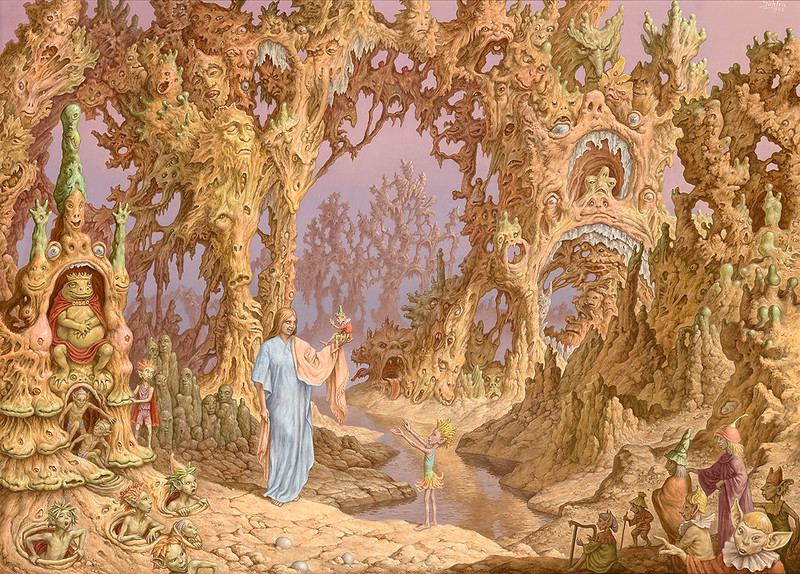 Ellen in Wonderland 2 - Ellen in dispute with a little harlequin
Ellen in Wonderland 2 - Ellen in dispute with a little harlequin
 The Bummer - Odysseus at Kirke
The Bummer - Odysseus at Kirke
 I made the impossible come true
I made the impossible come true
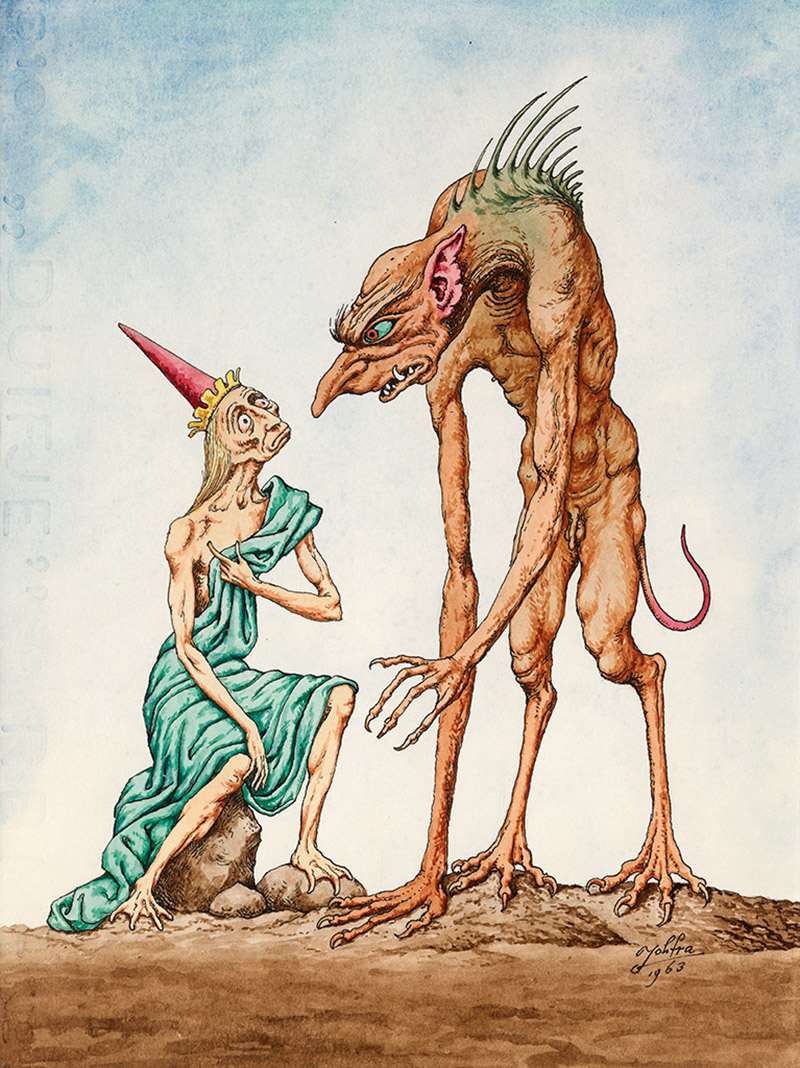 What do you think about marriage?
What do you think about marriage?
 Study for - The Liberation of Andromeda
Study for - The Liberation of Andromeda
 A Painful Encounter Artworks found at
A Painful Encounter Artworks found at
Artworks found at the Pathos Gallery website. A large retrospective of artworks by Johfra Bosschart will be on display starting September 21st at the Pathos Gallery in Amsterdam.
"Pathos Gallery presents: Johfra Bosschart
A selection of works by the Dutch godfather and pioneer of surrealism and fantastic realism.
Born as Franciscus Johannes Gijsbertus van den Berg, he later in 1945 adopted the pseudonym JohFra by using the first three letters from each of his two first names in reverse order. Much of his early life was spend in The Hague. From an early age he showed great abilities in drawing and later attended lessons at the Academy of Fine Arts in The Hague.
By 1943 he had assembled a considerable body of work that he was able to mount an exhibition. Most of his early pieces were destroyed in a bombing raid during the closing years of the Second World War. One that survived is his Fantastic figure of 1942.
In German occupied Holland he had little access to the wider art world but he did obtain a Nazi propaganda magazine with an article about degenerate art. This introduced him to the imagery of Dalí, Ernst, Tanguy, and Magritte. He became especially drawn to the work of Dalí. After the war Johra was free to paint and he produced a profusion of work. His Terra Incognita of 1955 clearly demonstrated the influence of Dalí. Throughout the 1950s he created many paintings in a flowing organic style.
In 1959 Johfra travelled to Port Lligat with the intention of meeting Salvador Dalí. Their meetings were somewhat strained and strange, but Dalí took them to his studio where he showed Johfra The Discovery of America by Christopher Columbus which he was then working on. Johfra, however, was rather disappointed with Dalí as he wrote in his diary "This visit left a storm of conflicting thoughts and feelings behind us. I found him repulsive yet sympathetic and tragic. An imprisoned person who is forced to be the figure that he himself has created. A victim of a world in which he is the fool, and of himself through his boundless vanity, making him impossible to break out of this situation. What I missed completely was every trace of joy and humour."
In the immediate post war years Johfra became involved with a fellow Dutch artist Diana Vanbenberg and they married in 1952. They were able to travel to Rome. Johfra held several solo exhibitions and gained some degree of financial stability. The 1950s saw the development of his mature surrealist style.
In A Spring Morning of 1957 he began to develop the tangled organic landscapes which appear in many of his later paintings. In 1967 he produced a series of four drawings on the theme of schizophrenia. Perhaps these show some influence from the symbolic language of Hieronymous Bosch and Breughel. These drawings marked a departure from his earlier surrealistic style towards a more emblematic, instructive and didactic one. This was perhaps already a component of his work, as is seen in the emblematic Son of the Snakes of 1951, but now this pictorial form became more central and his surrealist style somewhat diminishes in importance for him.
This perhaps reflects the influence of a new artistic partner in his life Ellen Lórien, whom he married in 1973. The 1970s marked an amazingly fruitful period for Johfra with the creation of many of his major pieces. It was during this period that art historian Hein Steehouwer devised the term 'Meta-Realists' for Johfra and the other artists in his circle suggesting they were depicting a realm beyond, or standing above, the real.
This was followed a year later by his Zodiac series which immediately touched the popular imagination as it appeared as illustrations in various books, and was made into large wall posters popular among the new age enthusiasts. Johfra later found this series to be a considerable burden as this became so bound to his name that his other work was unfortunately ignored. He described his works as "Surrealism based on studies of psychology, religion, the bible, astrology, antiquity, magic, witchcraft, mythology and occultism."
Johfra's legacy has been rather affected by the popularity of his 1970s Zodiac series, so much so that many of his surreal works became marginalised, however, we should view him as a significant surrealist, who shifted into a more emblematic, narrative and didactic style, in what was labelled as meta-realist, a term which he later disowned." - quote source
Johfra was previously shared on Monster Brains in 2009 and 2006.
Momentary resurfacing
Eternal Artifice: ‘Cuadecuc, Vampir,’ ‘Martin,’ and the Deconstructed Vampire
Sam Moore / September 1, 2021
The most striking moments in 1971’s Cuadecuc, Vampir, Pere Portabella’s experimental recreation of Bram Stoker’s Dracula entirely through behind-the-scenes footage of Jesus Franco’s 1970 adaptation of the novel, are the ones that have less to do with the vampire himself, and more to do with the illusions that are constructed and broken apart through cinema. Scenes where a train passing by ruins a take, or the curtain being pulled on how the special effects are made and used. These scenes show not only the ways in which the vampire myth continues to be reinvented throughout cinema, but also the ways in which it can be deconstructed. The cinematic vampire is a fragile thing, not only for its many vulnerabilities—sunlight, crosses, garlic—but for the ways in which it can be rendered hollow, a construction. The vampire as seen on film becomes a perfect example of how horror—as a genre, as a feeling—is created and recreated.
Vampirism is at the heart of cinema history. F.W. Murnau’s 1922 Nosferatu is one of the early examples of the medium’s great potential, and the iconic image of Count Orlock’s shadow looming large over a wall as he ascends a staircase to find his prey has lost none of its power. But if footage were revealed that showed how the filmmakers achieved it, then some of that magic, that fear, might be lost. Cuadecuc gambles on this, on the idea that watching Christopher Lee step in and out of a coffin between takes will weaken the fear that his Dracula inspires; but instead it captures how that fear is constructed, and is able to turn it into something else. The counterpoint of legitimate horror—the imagery in Cuadecuc, with its looming shadows and stark, black-and-white photography reminiscent of Nosferatu, with behind-the-scenes interludes—becomes a meditation on horror itself, a way of trying to understand why the things that scare us get under our skin. It’s about the relationship that the vampire myth has with the history of cinema, and how this archetypal, mythical figure can change with the times.
E. Elias Merhige’s Shadow of the Vampire (2000) also explores the place of the vampire film in cinematic history, and, like Cuadecuc, it’s a kind of commentary on how film reifies these myths. Merhige’s film imagines an alternative version of 1922 in which Max Schreck (Willem Dafoe), the actor who played Count Orloff in Nosferatu, is actually a vampire. Shadow is framed like a kind of rockumentary; there are moments in between scenes that offer a behind-the-scenes glance at the “production” of Nosferatu, with inter-titles that reference Murnau’s (John Malkovich) attempts “to accommodate his difficult star.” As Murnau says in the film, “If it’s not in the frame, it doesn’t exist,” something that both Cuadecuc and Shadow wrestle with in different ways. In the former, the idea of horror itself isn’t in the frame; it exists through the smokescreen of movie magic. Shadow makes vampirism real precisely by putting it in the frame. There are moments when the reality of Schreck’s vampirism literally bleed into the version of Nosferatu that’s being made, in stark counterpoint to the film’s climax, when his reflection is invisible in a full-length mirror, revealing to those around him that Schreck truly is the phantom of the night. In contrast to this, Cuadecuc obsesses over the artifice inherent in filmmaking, the fact that this horror is anything but real, instead interrogating how and why the real feeling of horror is constructed in the way that it is.
This desire to myth-bust the relationship between vampires and cinema is something that runs through the DNA of George Romero’s vampire film, the strange and somber Martin (1977). While the title character might think of himself as a vampire, he goes to great pains to tell people—from the paranoid family he stays with to the radio show he calls into using the alias “The Count”—that his vampirism isn’t a curse, or supernatural in nature, but that it’s a kind of illness instead. His late night calls with the radio show are testaments not only to his loneliness, but to the problems that he thinks movies create about vampires. Often, Martin sees these things as being intertwined: “And that’s another thing about those movies,” he says. “Vampires always have ladies. Sometimes lots of ‘em.” Martin has no ladies, and ties his vampirism into a kind of sexual repression, hoping to one day do it “awake, without the blood part. Just do it. And be with someone. And talk.” The DJ that he calls even sympathizes with him—as much as a shock jock can—telling him, “I’ve seen that in the movies. People try to stop your kind.”
The relationship that Martin the film and Martin the character have with other vampire movies is something that comes through in the character’s dream sequences. They’re in black and white and highly stylized, featuring Latin chants and shadow play straight out of Nosferatu or Jacques Tourneur’s Cat People (1942). In this way, it’s similar to Cuadecuc in its desire to show the artifice behind horror and the idea of a vampire myth that’s at once fluid and transparent, transforming into mist like the creatures themselves.
In treating vampires as real, Martin and Shadow of the Vampire both present different relationships with artifice than Cuadecuc. Murnau himself (the fictional one) even calls for “an end to this artifice,” which he gets in the form of his vampiric leading man, and Martin attempts to break down the artifice of cinematic vampires in order to reveal the loneliness of life as a real one. The reality of Schreck’s vampirism is sold to Murnau’s crew through a simultaneous embrace of and push against artifice. The director insists that Schreck is simply a method actor: he’ll be referred to as Orlock, wear no makeup, and only be filmed at night. It’s through the conceit and construction of cinema that the Murnau of Shadow is able to create the idea of a vampire that will end up going down in cinematic history.
What these three films have in common is a desire to unravel the ways in which the vampire is perceived by placing them in relationship to different ideas within cinema, whether these stories are being told through found footage, film history, or a sly self-awareness of where they exist in the canon. None of the filmmakers here treat horror as something that exists in a vacuum; instead, they understand the ways in which horror is constructed and mythologized, and find new ways to explore and manipulate the genre’s myths. The end of Cuadecuc ends as seemingly every vampire film does: with the killing of Dracula (just as Shadow’s Orlock and Martin’s Martin are killed). But instead of showing sunlight bursting through a window or a bloody stake, Portabella simply uses a scene of Christopher Lee in his dressing room describing the end of Stoker’s novel. These final moments in Cuadecuc go to the heart of all vampire films by highlighting the ways in which they vampirically drain from Stoker’s source material. Every iteration is a kind of supernatural rebirth, like the vampire itself, a mutation of the myth that runs through the genre’s bloodstream.
![]() Sam Moore‘s writing on queerness, politics, and genre fiction in art has been published by the Los Angeles Review of Books, Little White Lies, Hyperallergic, and other places. Their poetry and experimental essays have been published in print and online, most recently in the Brixton Review of Books. If their writing didn’t already give it away, they’re into weird stuff.
Sam Moore‘s writing on queerness, politics, and genre fiction in art has been published by the Los Angeles Review of Books, Little White Lies, Hyperallergic, and other places. Their poetry and experimental essays have been published in print and online, most recently in the Brixton Review of Books. If their writing didn’t already give it away, they’re into weird stuff.

Character Creation Challenge: NIGHT SHIFT Night Companion
 We are getting down to the wire here on The Night Companion!
We are getting down to the wire here on The Night Companion! Today's character comes to you all via the Night Companion rules and a challenge from my friend Greg to rebuild his Ghosts of Albion playtest character using the NIGHT SHIFT rules.
The Game: NIGHT SHIFT, Night Companion Rules
The Night Companion has a number of alternate rules for character creations including a point-buy system and new character types. I figure I will show off the Immortal rules here and how they work with NIGHT SHIFT RAW. I am also using the point-buy rules to "check my math."
The Character: Valerie Beaumont, the Immortal
Lady Valerie Beaumont has "haunted" my games for years. She was a playtest character created for Ghosts of Albion by my friend Greg Littlejohn. We have run games for each other off and on over the last 20+ years. He is a great person to give a test game to and tell him "to break it." There was an alternate combat system that almost went into to Ghosts but did not thanks to him!
Valerie was also later used when we were playtesting the first round of Doctor Who Adventures in Time and Space. Little known fact. A lot of the Ghosts of Albion playtesters were also playtesters for Doctor Who.
Valerie, being immortal also was part of my Spirit of '76 campaign and will be part of Black Star where she will be Captain of the USS Mystic.
76 is the past and the Mystic is the future, but here is Val now, living in 2021 in one of the Night Worlds of NIGHT SHIFT.
 Valerie Beaumont
Valerie Beaumont5th Level Survivor/10th Level Sage (Immortal)
Base Abilities
Strength: 12 (0)
Dexterity: 16 (+2)
Constitution: 14 (+1)
Intelligence: 21 (+4) P *
Wisdom: 16 (+2) s
Charisma: 16 (+2) s
HP: 5d4+5 / 10d6+10
AC: 9
Fate Points: 1d10
Check Bonus (P/S/T): +8/+5/+3
Melee bonus: +6 Ranged bonus: +8
Saves: +3 Death Saves and area effects. +5 to saves vs. spells and magical effects. She gains an additional +5 to all saving throws against magic, poison, disease, and death-based attacks due to her immortality.
Immortal Powers
Unique Kill: Virginia Dare (See Below)
Immortals regenerate 1d8 hit points every minute.
+3 to Intelligence
Survivor Skills
Open Locks: 115%
Bypass Traps: 110%
Sleight of Hand: 120%
Move Silently: 120%
Hide in Shadows: 110%
Hair: Red
Eyes: light-green
Height: 5'7"
Spells
1st level: Magic Missle, Glamour, Sleep
2nd level: ESP, Produce Flame, Suggestion
3rd level: Clairvoyance, Haste, Water Breathing
4th level: Arcane Eye, Phantasmal Killer
Immortal Arcana
Innate Magic: Suggestion (x3 per day)
Enhanced Senses
Valerie was born in 1569 and is immortal. She was a young English girl that made her way to the new world in the year 1585. She came to the new world and settled in the Roanoke Colony where she lived for a couple of years. Then something happened. She was caring for the young Virginia Dare and then woke up several days later and several miles from home. When she had managed to return to the colony, everyone was gone. She also discovered that she was immortal and was certain that the two were somehow linked.
Valerie spent the next few years roaming the new world. She learned magic from some of the few true witches in Salem and more from the indigenous Native Americans.

She has a ring on her right little finger that manages a glamour that "ages" her. A gift from a former lover. Currently, she appears to be in her mid-40s. Without the glamour, she appears as she did when she discovered her immortality, a young woman of 18. Her mind though is as someone just over 450.
Shadow Steel Sword
She also carries a long thin blade made of "shadow steel" a rare form of steel that the Fae can use. It can attack any supernatural creature, even ones that are incorporeal or shifted out of phase.

Virginia Dare
When Valerie was brought to the American colonies her primary employment was with the Dare family to act as a caretaker to the newborn Virginia Dare. When Valerie was separated from the colony all the other people living in the Roanoke Colony were gone, including Virginia Dare. For years and even centuries, people claimed to have seen Dare, now grown into young adulthood and called the White Doe. Many believed the sitings of Dare were nothing more than a myth.
That is, everyone except for Valerie.
At some point around 1622 Valerie encountered Virginia living with the Powhatan in the forests of Virginia. At first, Valerie was elated to find Virginia, but this soon turned when Virginia blamed Valerie for the disappearance of the colony. The two fought and discovered quickly that they could harm, even likely kill, each other. Likely they would have if they had not been interrupted by British forces. Over the next few centuries they would encounter each other and it would lead to fighting.
Both Valerie and Virginia are immortals. The only thing that can kill them is each other.
Virginia Dare is "played" in my games by Rose Byrne.


Looking forward to doing some more with these two.
--
I have her start as a Survivor. She was displaced from her colony and spent many years wandering the unknown wilds of the North American continent. Eventually, she picked up knowledge here and there about various occult matters in including some magic.
I like this since it really shows off how flexible the multi-classing system for NIGHT SHIFT can be.
Want to see more? Pledge for the Night Companion on Kickstarter!
#RPGaDAY2021 Day 31 Thank
"Beyond the Pleasuredome: The Lost Occult World of Burt Shonberg" curated by BRIAN CHIDESTER at the BUCKLAND MUSEUM OF WITCHCRAFT AND MAGICK, Cleveland Ohio AUGUST 17 - NOVEMBER 1 2021
The exhibition opens August 17 and continues through November 1, 2021. The exhibition is curated by historian, documentarian, and longtime Shonberg advocate Brian Chidester. It is accompanied by a catalog, the first ever exclusively devoted to Shonberg's art, with essay also by Chidester, an introduction by Minneapolis Institute of Art curator Robert Cozzolino, a director’s foreword by Steven Intermill of the Buckland, and contributions by Shonberg friend Marshall Berle, screenwriter/former Shonberg roommate Hampton Fancher, and esteemed filmmaker Roger Corman.
Further details can be found at the Buckland Museum of Witchcraft and Magick website.
Additional information and imagery can be found at Burt Schonberg.net
"Burt’s work had a mystical, mysterious quality. It was perfect for capturing the evil inherent in the faces of the Usher family ancestors. I provided Burt with character histories and let his imagination roam free. In his depiction of Vivien Usher, a murderess who died in a madhouse, Burt painted a terrifying image of a woman with blacked out eyes in a haunting color scheme reminiscent of Picasso’s blue period. For Bernard Usher, a jewel thief and drug addict, Burt painted a portrait that seemed to mimic an element of double exposure photography but in a fiery psychedelic red that seemed to burn through the canvas like a Turner on acid. Burt Shonberg captured the tormented spirits of the Usher family, as well as the spirit of the entire film, perfectly. Together, we came up with one of the most unique and memorable uses of painting as a storytelling device in film: a manifestation of the subconscious malevolence lurking within Roderick Usher. A few years later, I was lucky to work with Burt again on a subsequent Poe picture, The Premature Burial. Like many other artists in Southern California in the 1960s, crossing paths with Burt Shonberg altered my artistic consciousness. He was a one of a kind visionary, and my collaboration with him remains one of my most treasured experiences." Roger Corman, July 2021
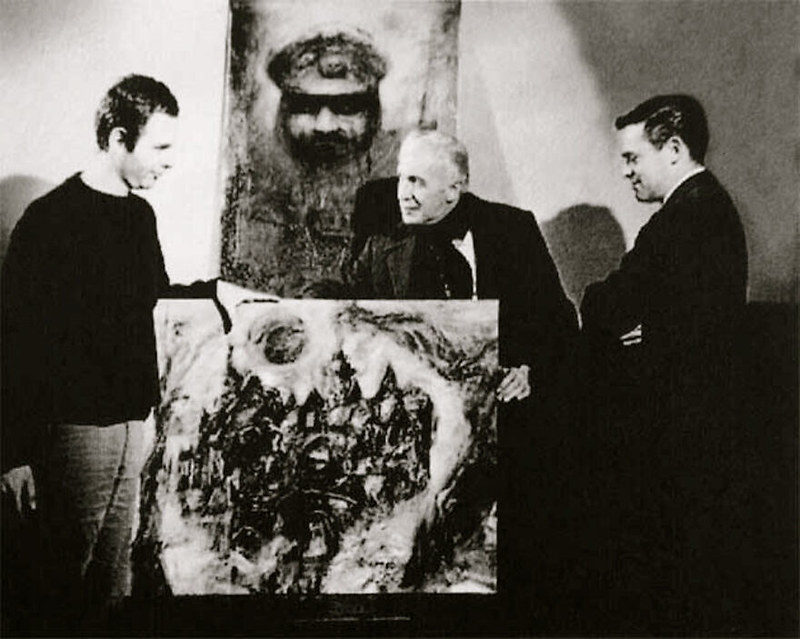 Burt Shonberg, Vincent Price, Roger Corman circa 1960
Burt Shonberg, Vincent Price, Roger Corman circa 1960
 Vincent Price and Mark Damon with Burt Shonberg paintings in "The House of Usher" 1960
Vincent Price and Mark Damon with Burt Shonberg paintings in "The House of Usher" 1960
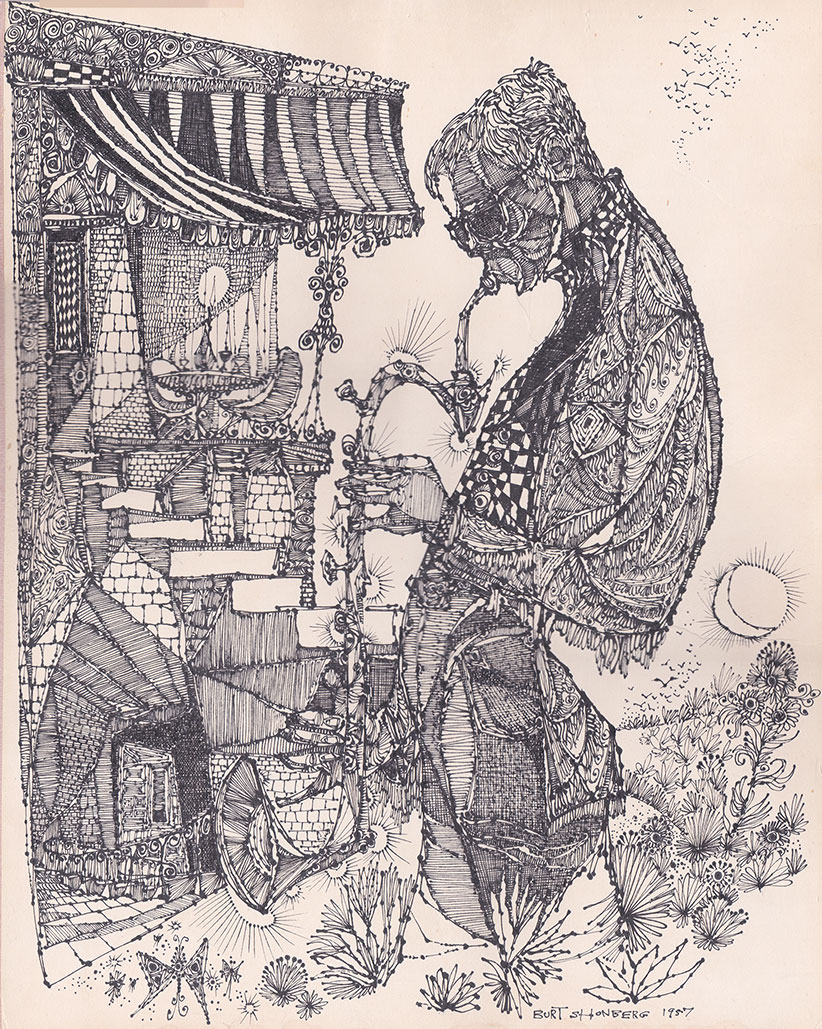 Frankenstein's Monster playing the Saxophone. 1957
Frankenstein's Monster playing the Saxophone. 1957
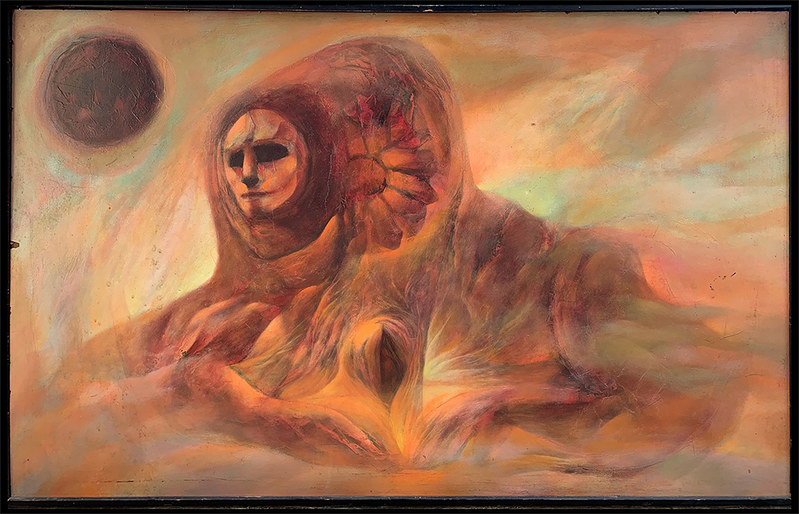 The Sphinx, probably a portrait of Majorie Cameron. circa 1958 - 1961
The Sphinx, probably a portrait of Majorie Cameron. circa 1958 - 1961
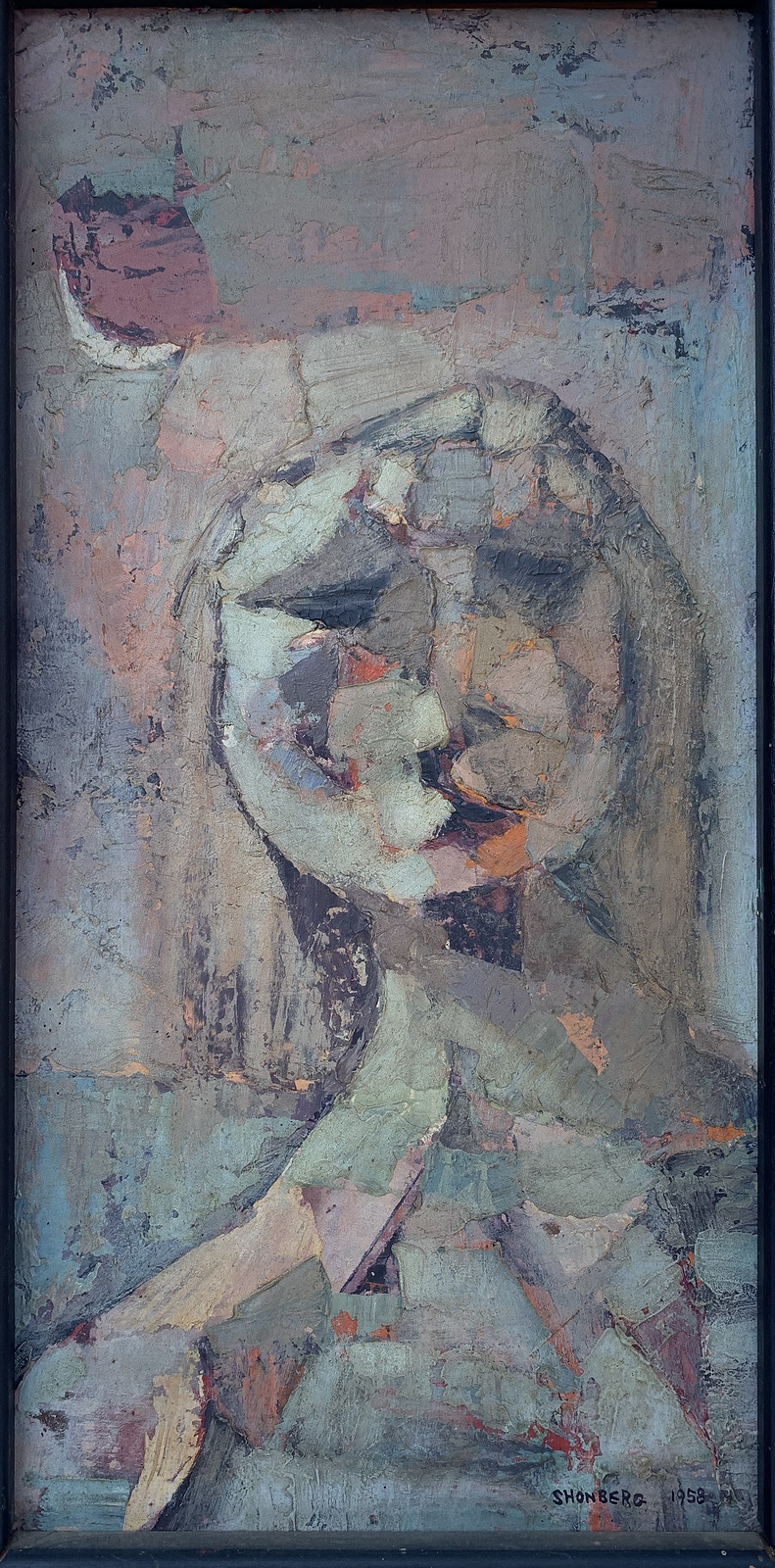 Bride of Frankenstein circa 1957-58
Bride of Frankenstein circa 1957-58
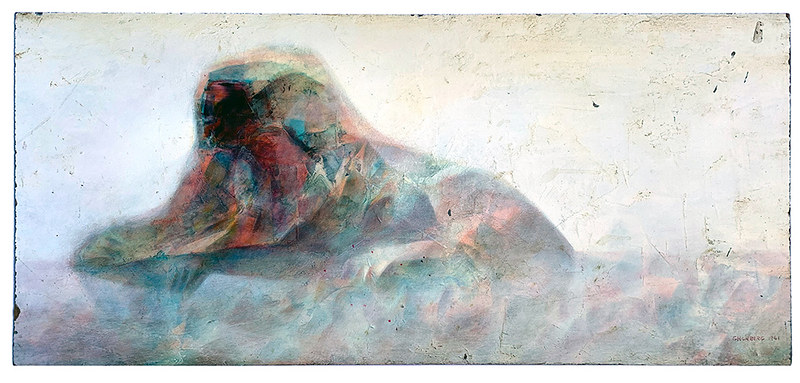 Title Unknown,Sphinx, possibly another portrait of Marjorie Cameron
Title Unknown,Sphinx, possibly another portrait of Marjorie Cameron
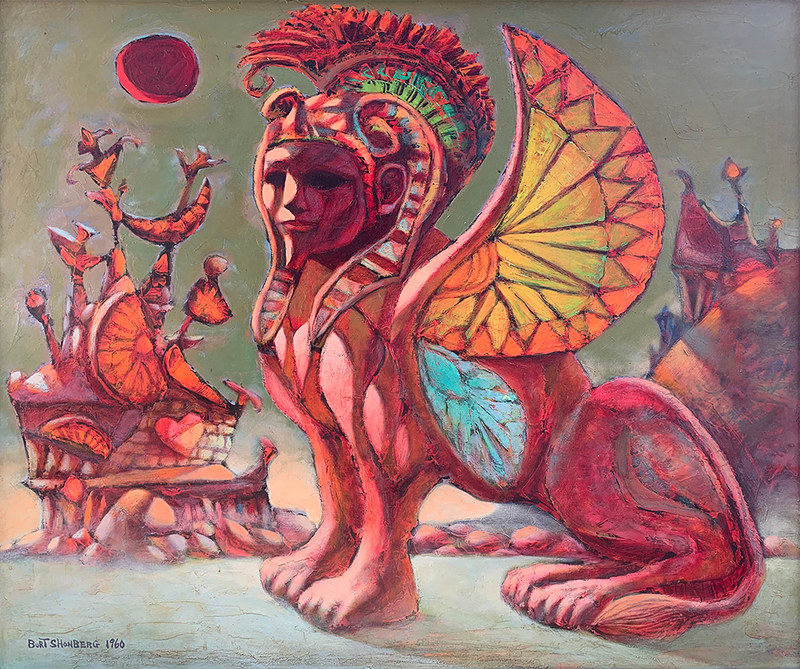 Title Unknown The Hermetic Sphinx 1960
Title Unknown The Hermetic Sphinx 1960
 exterior of Cafe Frankenstein, Laguna Beach circa 1960
exterior of Cafe Frankenstein, Laguna Beach circa 1960
 Detail of interior of Cafe Frankenstein, Laguna Beach, California, circa 1958
Detail of interior of Cafe Frankenstein, Laguna Beach, California, circa 1958
 "Sin Consummations Devoutly to be wished" 1962 Commissioned by Roger Corman for the film "The Premature Burial", whereabouts unknown.
"Sin Consummations Devoutly to be wished" 1962 Commissioned by Roger Corman for the film "The Premature Burial", whereabouts unknown.
Drawings Made For Gamma Magazine Vol 1 No 2 1963


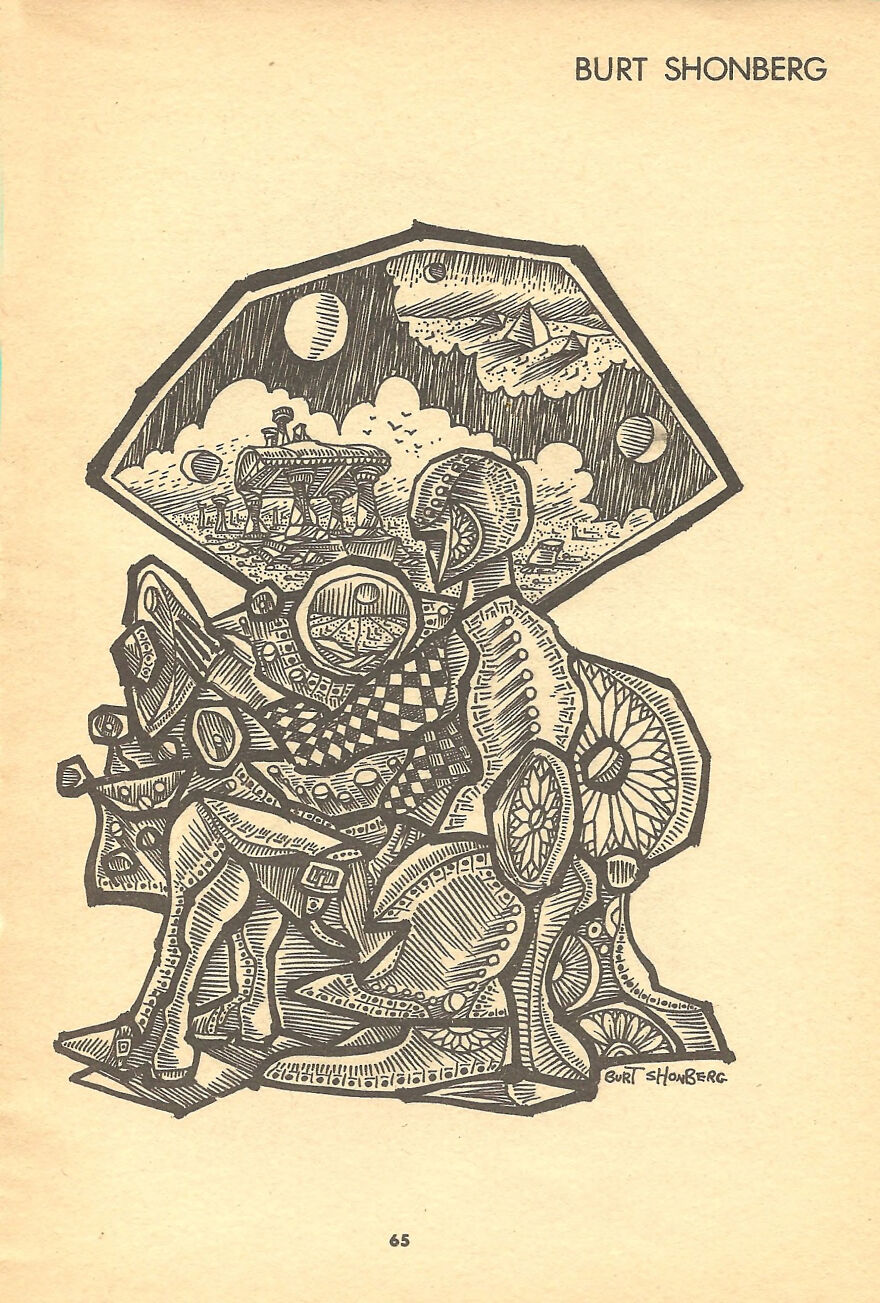


 "Magical Landscape (Lucifer in the Garden) 1961
"Magical Landscape (Lucifer in the Garden) 1961
"What does it look like or mean when an artist strives to show their audience the feel and look of expanded consciousness, another world they have seen and been absorbed into? is it even possible with the material tools of paint? Shonberg attempted just that, and the results transport the viewer, rhyme with the work of mediums and those who practiced astral projection, are at home in parallel dimensions to be visited in trips. He came close to presenting what that feels like with the modest tools at hand. And isn’t that what we want of artists? To collaborate with us to shift consciousness and to transport us out of the mundane reality that we face here and now? There is the suggestion in these new worlds that we have the power to change what we know is toxic on ours. "
Robert Cozzolino
Patrick and Aimee Butler Curator of Paintings
Minneapolis Institute of Art
“Burt Shonberg was more than just an artist, he was a “prospector of consciousness” who travelled to areas outside of our collective awareness and painted what he saw during those excursions”
- Marshall Berle,former manager of Spirit and Van Halen Director and producer of “Out Here: A film About Burt Shonberg”
"Shonberg was too strange for even the '60s California sci-fi world, and too far removed from the fine art establishment, to be embraced by either. Even today, when radical viewpoints are commonplace in the art world, Shonberg has yet to receive recognition. Meanwhile, a unique body of work remains hidden in plain sight."
- Brian Chidester, exhibition curator
This article, event details and all images were provided by Stephen Romano of the Stephen Romano Gallery.
Ghosts of Albion is a Platinum Best Seller!
I was working on something for later in the week and I noticed something really cool.
Ghosts of Albion is a Platinum Best Seller!
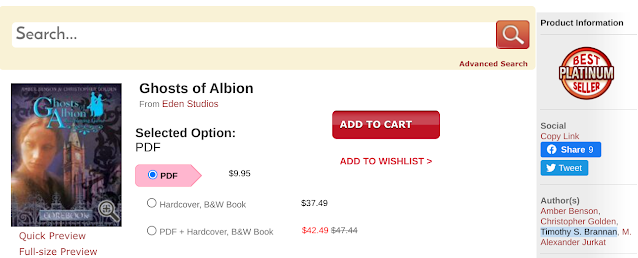
I have a Platinum best-selling title! I do admit I am pretty pleased by this. This game is my pride and joy.
Another of my favorites is NIGHT SHIFT which is also moving up in the sales ranks.

Silver is pretty good considering we had a successful Kickstarter and sell the book via the Elf Lair Games store-front.


Don't forget! The Night Companion is in the last days of its Kickstarter. Love to hit the 5k stretch goal, but 6k would be even better.
For Cultured Friends XIII: The Excellent Travelling Volume Issue No. 13
 For devotees of TSR Inc.’s Empire of the Petal Throne: The World of Tékumel, the various issues of The Excellent Travelling Volume, James Maliszewski’s fanzine dedicated to Professor M.A.R. Barker’s baroque creation continue to provide dedicated support and further exploration. Published in June, 2021, The Excellent Travelling Volume Issue No. 13—available in print via lulu.com—is the most recent issue. As with previous issues, his exploration of one of oldest of roleplaying settings is heavily influenced by the campaigns he has been running, the primary being his House of Worms campaign, originally based in, around, and under Sokátis, the City of Roofs before travelling across the southern ocean to ‘Linyaró, Outpost of the Petal Throne’, a small city located on the Achgé Peninsula, as detailed in The Excellent Travelling Volume Issue No. 8. However, although he continues to be the primary contributor to the fanzine, this latest issue contains multiple submissions from other authors, which is not only encouraging, but hopefully, a sign of things to come.As per usual, The Excellent Travelling Volume Issue No. 13 opens an editorial from James Maliszewski. As you would expect, this does highlight the challenging nature of the last year, but its main focus is the difficulty of its production and in particular, the postal and printing troubles. Fortunately, these have been solved with the move to lulu.com. The editorial also welcomes the multiple submissions from other authors that feature in the issue. The first of the additions in The Excellent Travelling Volume Issue No. 13 is drawn from the author’s House of Worms campaign, specifically from its current exploration of ‘Linyaró, Outpost of the Petal Throne’, a small city located on the Achgé Peninsula. ‘Naqsái Sorcery’ presents a new form of sorcery which differs from that known amongst the temples of the Five Empires. Naqsái sorcery involves the study of one hundred and eight ideograms. These appear to be two-dimensional, but closer and continued study reveals that they actually have three or more dimensions and can be used to access the same energies of the Planes Beyond as sorcerers of the Five Empires do. The article suggests a way in which a Player Character sorcerer might come to learn such ideograms—at a new Level switching to the new ideograms and their associated spells rather than the traditional spells he might learn from a temple. At subsequently newly acquired Levels, he might switch back. Several sample ideograms are listed, organised into Groups as per Empire of the Petal Throne: The World of Tékumel. These include Chúr, which completely copies (but does not translate) the contents of a non-magical scroll, book, or codex for the caster, and Ósuni, which fills the lungs of a designated target with saltwater, which can cause drowning if not immediately treated. The ten sample ideograms each come with their own actual ideograms and represent a mix of the familiar and unfamiliar in terms of spell design. For ease of use, it would have been better perhaps if the spells had been listed by Group rather than alphabetically, and potentially, the ideogram Hrún, which transmutes non-living objects into steel may have a game changing effect given how rare that metal is on Tékumel. Otherwise an interesting and different approach to magic that has room expansion and further mysteries.
For devotees of TSR Inc.’s Empire of the Petal Throne: The World of Tékumel, the various issues of The Excellent Travelling Volume, James Maliszewski’s fanzine dedicated to Professor M.A.R. Barker’s baroque creation continue to provide dedicated support and further exploration. Published in June, 2021, The Excellent Travelling Volume Issue No. 13—available in print via lulu.com—is the most recent issue. As with previous issues, his exploration of one of oldest of roleplaying settings is heavily influenced by the campaigns he has been running, the primary being his House of Worms campaign, originally based in, around, and under Sokátis, the City of Roofs before travelling across the southern ocean to ‘Linyaró, Outpost of the Petal Throne’, a small city located on the Achgé Peninsula, as detailed in The Excellent Travelling Volume Issue No. 8. However, although he continues to be the primary contributor to the fanzine, this latest issue contains multiple submissions from other authors, which is not only encouraging, but hopefully, a sign of things to come.As per usual, The Excellent Travelling Volume Issue No. 13 opens an editorial from James Maliszewski. As you would expect, this does highlight the challenging nature of the last year, but its main focus is the difficulty of its production and in particular, the postal and printing troubles. Fortunately, these have been solved with the move to lulu.com. The editorial also welcomes the multiple submissions from other authors that feature in the issue. The first of the additions in The Excellent Travelling Volume Issue No. 13 is drawn from the author’s House of Worms campaign, specifically from its current exploration of ‘Linyaró, Outpost of the Petal Throne’, a small city located on the Achgé Peninsula. ‘Naqsái Sorcery’ presents a new form of sorcery which differs from that known amongst the temples of the Five Empires. Naqsái sorcery involves the study of one hundred and eight ideograms. These appear to be two-dimensional, but closer and continued study reveals that they actually have three or more dimensions and can be used to access the same energies of the Planes Beyond as sorcerers of the Five Empires do. The article suggests a way in which a Player Character sorcerer might come to learn such ideograms—at a new Level switching to the new ideograms and their associated spells rather than the traditional spells he might learn from a temple. At subsequently newly acquired Levels, he might switch back. Several sample ideograms are listed, organised into Groups as per Empire of the Petal Throne: The World of Tékumel. These include Chúr, which completely copies (but does not translate) the contents of a non-magical scroll, book, or codex for the caster, and Ósuni, which fills the lungs of a designated target with saltwater, which can cause drowning if not immediately treated. The ten sample ideograms each come with their own actual ideograms and represent a mix of the familiar and unfamiliar in terms of spell design. For ease of use, it would have been better perhaps if the spells had been listed by Group rather than alphabetically, and potentially, the ideogram Hrún, which transmutes non-living objects into steel may have a game changing effect given how rare that metal is on Tékumel. Otherwise an interesting and different approach to magic that has room expansion and further mysteries.The subject of magic continues with ‘The Magic-User’. This proposal suggests changes to the Magic-User Class from Empire of the Petal Throne: The World of Tékumel. This is to make the Class more flexible and less Change-oriented, offering a more balanced take so that a player could roleplay a Stability-worshipping sorcerer. It follows on from a similar treatment of the Warrior Class in The Excellent Travelling Volume Issue No. 12 and gives a new list of initial professional skills, as well as an explanation of skills such as Aspects and Mythology and Inner Doctrines. Unfortunately, this is untested and it would need some playtesting, although the possibility of this seems unlikely in the short term.
‘Shiringgáyi: Queen of the Heavens and of Tékumel’ explores the religious history of Tsolyánu’s eastern neighbour, Salarvyá, and its differences with the other faiths of the Five Empires derived from the priest Pavár’s theological revolution. Whilst scholars of the other Five Empires take an interest in that history, the Salarvyáni simply give Shiringgáyi pride of place among all the gods. Her influence and those of her priestesses is such that they sit on the country’s Council of Nobles which decides its next king, who is then ‘reborn’ as the ‘son of Shiringgáyi’ and rules until such times as he is deemed physically and mentally unfit to rule and as the goddess ‘withdraws her blessings’ from him, only accepting back into her bosom following his ritual impalement. This adds both background and detail to the world of Tékumel, and would not only be useful should the Player Characters visit Salarvyá, but also should a player want to roleplay a priestess of Shiringgáyi.
One of the best ongoing features in The Excellent Travelling Volume is the Patrons section. Each entry includes six ready-to-play NPCs, including stats, skills, and spells, as well as a thumbnail portrait, some background and a reason for their wanting to employ the Player Characters. Not only a reason, but also several different explanations as to what is actually going on. Thus, Di’iqén hiTurshína, a priest of Grugánu who believes that someone is trying to kill him. The explanations include the fact that he is mistaken, a rival attempting to discredit him by making him paranoid, his temple testing his suitability for advancement, and another rival competing for the affection of a pretty ritual priestess of Ksárul. Modelled after the entries in the supplement, 76 Patrons for the Science Fiction roleplaying game, Traveller—of which the author is an avowed fan—these patrons are excellent, each providing an individual NPC and an adventure that the Game Master can develop.
The second addition in the issue is ‘Poisons, Antidotes & Narcotics’, useful for campaigns which involve murder or assassination, or social situations, the latter given the fact that the societies of the Five Empires hold no stigma when it comes to the social use of ‘The Powders’ as they are known.
The first of the submissions to The Excellent Travelling Volume Issue No. 13 is ‘Puppetmaster Clans’ by Rob Smith. There are two of these in the Five Empires, the Society of the Hands Which Are Not Seen and the Clan of the Striding Incantation, and both are highly secretive about the arts they practice, the performance of sagas, plays, poems, and even gladiatorial duels using puppets of wood, metal, bone, and other materials, which then animated using spells. It adds the new skill, ‘Performer: Puppeteer’ and covers roles such as Puppet Artist, Set Designer/Craftsman, Musician, and more, as well as Puppetmaster Magic. This adds new spells such as Animate Puppets I, Animate Peerless Puppet, and even Transfiguration, which turn the victim of the spell into a living puppet! The Puppetmaster clans perform regularly at the homes of the nobility and the roleplaying possibilities that they suggest are numerous, including single clan campaigns travelling the Five Empires getting involved in intrigues and seeing the world, murder mysteries, and more. Perhaps only lacking the lineage names for the respective clans, this is a fine addition to Tékumel campaign.
David A. Lemire provides more fiction in the form of ‘The Epic of Hrúgga. This brings to life one of the heroic figures from the past of the Five Empires, and in addition to being an enjoyable read, might serve as inspiration for a performance by the previously explored ‘Puppetmaster Clans’.
Lastly, ‘Hanging on the Ropes’ by Mikael Tuominen is a lengthy encounter in the wilderness at long, rope bridge crossing a ravine, river, or swamp. On its other side waits a lavishly but tastelessly dressed warrior with a gem-encrusted sword ready to strike at the ropes of the bridge. This is Kúrkuru hiSáchi, a soldier of fortune with a grudge to settle against the Temple of Hrü’ü for the death of his sister. The question is, does his vendetta have any basis in fact, is he acting nobly or ignobly? This is a really nicely developed encounter, relatively easy to drop into a campaign, which also forces the Player Characters to question their preconceptions. It also pleasingly addresses the issue for the point of view of both Stability and Change worshippers, and so feels nicely rounded. There should be more like this in the pages of the fanzine.
Physically, The Excellent Travelling Volume Issue No. 13 is nicely produced, a sturdy little booklet in a thick card cover, pleasingly illustrated and tidily presented throughout. The Excellent Travelling Volume Issue No. 13 continues the author’s excellent support for Empire of the Petal Throne: The World of Tékumel. It is a solid issue, packed with content and background, made all the better for the submissions, that the Referee can readily bring to her campaign.
#RPGaDAY2021 Day 30 Mention

Almost to the end!
Day 30 Mention
I thought I might mention some D&D-related content I am looking forward to.
From Wizards of the Coast
Some great-looking books coming up.
The Wild Beyond the Witchlight reminds me a bit of the Ravenloft Carnival product for 2e. Likely that is how I am going to use it. Love the idea of a traveling carnival from the Feywild. Plus the chance for the return of Warduke, Kelek, and Skylla? Yeah, sign me up!
Fizban's Treasury of Dragons. Ok, I am not looking forward to this one per se, but I am looking forward to seeing my oldest, dragon-loving, son get it. Though it does look like it has a lot of cool things in it.
Strixhaven: A Curriculum of Chaos. Seriously. How could I know be excited about this one?
From Goodman Games
Original Adventures Reincarnated #6: Temple of Elemental Evil. I never played or ran the ToEE back in the day. I have planned on using it as the penultimate adventure for my D&D campaigns when they all end. This two-volume set looks fantastic is exactly what I need for my campaign.
So yeah. I am sure there is more, but these are the ones on my mind right now.
Don't forget NIGHT SHIFT The Night Companion is nearing its last few days. Give us some support. If we hit the stretch goal I will give a new Night World and this will keep me out of trouble for a while.
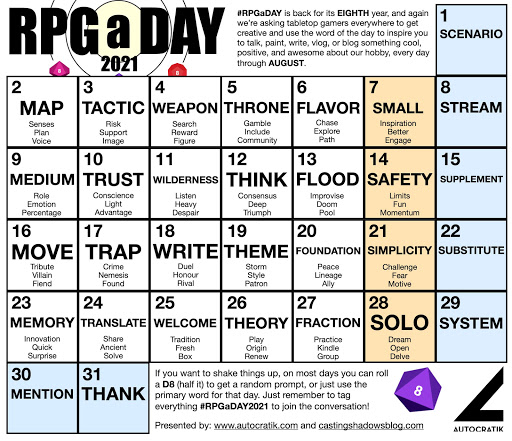
[Fanzine Focus XXVI] Black Pudding #6
 On the tail of Old School Renaissance has come another movement—the rise of the fanzine. Although the fanzine—a nonprofessional and nonofficial publication produced by fans of a particular cultural phenomenon, got its start in Science Fiction fandom, in the gaming hobby it first started with Chess and Diplomacy fanzines before finding fertile ground in the roleplaying hobby in the 1970s. Here these amateurish publications allowed the hobby a public space for two things. First, they were somewhere that the hobby could voice opinions and ideas that lay outside those of a game’s publisher. Second, in the Golden Age of roleplaying when the Dungeon Masters were expected to create their own settings and adventures, they also provided a rough and ready source of support for the game of your choice. Many also served as vehicles for the fanzine editor’s house campaign and thus they showcased how another DM and group played said game. This would often change over time if a fanzine accepted submissions. Initially, fanzines were primarily dedicated to the big three RPGs of the 1970s—Dungeons & Dragons, RuneQuest, and Traveller—but fanzines have appeared dedicated to other RPGs since, some of which helped keep a game popular in the face of no official support.
On the tail of Old School Renaissance has come another movement—the rise of the fanzine. Although the fanzine—a nonprofessional and nonofficial publication produced by fans of a particular cultural phenomenon, got its start in Science Fiction fandom, in the gaming hobby it first started with Chess and Diplomacy fanzines before finding fertile ground in the roleplaying hobby in the 1970s. Here these amateurish publications allowed the hobby a public space for two things. First, they were somewhere that the hobby could voice opinions and ideas that lay outside those of a game’s publisher. Second, in the Golden Age of roleplaying when the Dungeon Masters were expected to create their own settings and adventures, they also provided a rough and ready source of support for the game of your choice. Many also served as vehicles for the fanzine editor’s house campaign and thus they showcased how another DM and group played said game. This would often change over time if a fanzine accepted submissions. Initially, fanzines were primarily dedicated to the big three RPGs of the 1970s—Dungeons & Dragons, RuneQuest, and Traveller—but fanzines have appeared dedicated to other RPGs since, some of which helped keep a game popular in the face of no official support.Since 2008 with the publication of Fight On #1, the Old School Renaissance has had its own fanzines. The advantage of the Old School Renaissance is that the various Retroclones draw from the same source and thus one Dungeons & Dragons-style RPG is compatible with another. This means that the contents of one fanzine will be compatible with the Retroclone that you already run and play even if not specifically written for it. Labyrinth Lord and Lamentations of the Flame Princess Weird Fantasy Roleplay have proved to be popular choices to base fanzines around, as has Swords & Wizardry.
Black Pudding is a fanzine that is nominally written for use with Labyrinth Lord and so is compatible with other Retroclones, but it is not a traditional Dungeons & Dragons-style fanzine. For starters, it is all but drawn rather than written, with artwork that reflects a look that is cartoonish, a tone that is slightly tongue in cheek, and a gonzo feel. Its genre is avowedly Swords & Sorcery, as much Fafhrd and the Gray Mouser as Conan the Barbarian. Drawn from the author’s ‘Doomslakers!’ house rules and published by Random Order via Square Hex, Black Pudding’s fantasy roleplaying content that is anything other than the straight-laced fantasy of Dungeons & Dragons, but something a bit lighter, but still full of adventure and heroism. Issues one, two, and three have showcased the author’s ‘Doomslakers!’ house rules with a mix of new character Classes, spells, magic items, monsters, NPCs, and adventures. Black Pudding #4 included a similar mix of new Classes, NPCs, and an adventure, but also included the author’s ‘OSR Play book’, his reference for running an Old School Renaissance game, essentially showing how he runs his own campaign. Black Pudding #5 was more of a return to form, a mix of new character Classes, spells, magic items, monsters, NPCs, and adventures. It did, however, begin to suggest a campaign setting.
Black Pudding No. 6 continues where Black Pudding No. 5 left off. Previous issues of the fanzine have always been entertaining, but primarily felt like collections of new Classes, character sheets, monsters, and NPCs from the author’s ‘Doomslayers’ campaign, but without really presenting what that ‘Doomslayers’ campaign actually is. Now Black Pudding No. 5 did contain its own collection of new Classes, character sheets, monsters, and NPCs from the author’s ‘Doomslayers’ campaign, but it also included something more. This included the mini-sandbox, ‘Standing Stones of Marigold Hills’, but was really seen in ‘Adventures in the North’. This was a small region taken from Yria, part of the ‘Doomslakers’ campaign, beset by arctic temperatures, Ice Witch matriarchs, Ice Wights, and more! Parts of Black Pudding No. 6 carry on directly from ‘Adventures in the North’, but there is new setting material too. Further, Black Pudding No. 6 marks another shift, this time in terms of rules, so that it covers Old School Essentials as well as Labyrinth Lord.
Black Pudding No. 6 is not without its new character Classes. These begin with ‘The Fat Lady’, as in, “It’s not over until the fat lady sings.” This Charisma-based Class should ideally be clad in armour with literal breast plates and winged helmets, and is all about singing, first to increase her Strength, to heal, to inflict damage, and influence people. Combine this with the Barbaribunny Class from Black Pudding #1 and the Referee will quickly find herself running What’s Opera, Doc?! ‘The Demodyn’ is a wee demon person who constantly radiates heat, can cast Burning Hands daily and any fire spell from a scroll, and ultimately, open a portal to the Infernal Plane daily. The third Class is the Beastfriend, who possesses a supernatural affinity with wild creatures and can calm, befriend, and ultimately call them to come to the aid of the Beastfriend.
One of the best on-going features in Black Pudding is ‘Meatshields of the Bleeding Ox’, a collection of NPCs ready for hire by the Player Characters (or in a pinch, replacement Player Characters). As before, there is a decent range of NPCs given here, such as Malloid the Mage, a Fifth Level Magic-User who knows many things, but if not, can ask the Kosmik Halo that constantly whirls about his head; Totterdun of Udderpeak, a Second Level Dwarf from a poorly regarded family of Dwarves, who likes to work, to get the job done as agreed—and no more, and then getting paid; and the Weird Boatmen, several Zero Level creatures who have access to the Boat of Safe Passage, who speak little, but for a price will safely take you across any body of water in complete safety. Where in previous issues there have just too many entries in this ongoing series, here they are kept to just eight and that feels just the right number.
The monsters in the issue a Monstrous Toad with a mucoid skin—the mucus can be collected and boiled to make a frog and toad repellent, and an unpleasant personality who enjoys giving out insults; Iggy the Husker, a pig-man-thing which can be summoned to hunt and dine on man; and the Nightstalker, a dog-like creature which nightly waits in the shadows to hunt those that be Powers That Be committed a bad act and should be punished. Only the victim can see it and he or she cannot ignore it lest their rolls be made at a disadvantage, the Nightstalker making a single claw and gaze attack nightly, the former inflicting deep scratches, the latter the random loss of Attribute points! The monsters here are more singular than is usual and perhaps all the more memorable for it.
‘Adventures in the North’ is continued from the previous issue and as well as adding soft, lumpy, and magical Snowmen who might come to the aid of of unwary travellers in the region, perhaps with healing magic, perhaps with messages written in the snow, it provides a table of things to be found upon the Frozen Victims of the Ice Witches. Found along the road to the north is Trence the Troll’s Roadhouse, owned by a hard man said to have troll’s blood in his veins and be capable of walking naked in the snow for miles, and claim that the weather was no more than, “a bit chilly”. For a good enough tip, he might impart some important piece of information that will help the Player Characters whilst they are in the north, but otherwise he will remain as cold and as tightlipped as his welcome—and he certainly will not explain why he has his mother in the cellar! Beyond lies the Domain of the Snow Witches, which Dembellina Rue, the Matron Prime rules with a cruelly icy grip and breeds goblins from filth and refuse. The two parts—in this issue and the previous one, provide a nicely done and particularly wintery north (barring the Ice Camels which feel silly), that can easily be dropped into a Referee’s campaign.
The feature article in Black Pudding No. 6 is ‘Underground Down Below: An Old School mapcrawl adventure for PC levels 3-6 or so’. This is a wilderness style adventure, but located underground, an underground into which the Player Characters have been cast, perhaps randomly, perhaps not. Down below, the Player Characters will find animated cave mouths capable of chomping them to bits, a shrine to the war goddess Hilda built from dung; mounds—some home to grumpy ants, some ambulatory and home to Granny Naga, other of soft stone upon which to fall asleep and fall prey to their hungry denizens; the remains of a once great, but long dead empire; a mighty palace crumbling under the care of decrepit, aging staff who await the return of their long lost leader; and walking villages home to tiny people who will also try to eat the Player Characters, though their attacks are like insect bites. If attacked the villages flip over and hide under thick shells.
There are almost forty locations in the ‘Underground Down Below’, all of them odd, even creepy. This feel is aided by the map and the intentionally scrappy presentation which pulls apart the map and provides a closer view of each location to accompany the description. This is necessary in part because the main map is cramped on the page, but this is not the real issue with the locale. Although there is plenty of ideas and imagination here, unless the Player Characters are cast down into it at random and thus need to find a way out, it does lack a hook or two for them to want to visit. This may necessitate the Referee combing through the various locations to derive such a motivation from them, which given the format is not as immediately easy as it should be. Overall, there is a lot of imagination to work with here, excepting motivations, and so ‘Underground Down Below’ is not as good as it could be.
‘A Trolling We Will Go’ provides a ready-to-play location, a play upon the idea of rolls being found under bridges. The Troll itself, an Urnt Troll, is a combination of the classic goat-hating Troll and the Dungeons & Dragons Troll, complete with powers of regeneration. The location is built and illustrated around a set of random tables which provide random finds, the Urnt Troll’s treasure, Trollish reactions, and more. Again, this is nicely detailed and easy to drop into a campaign.
Elsewhere in the issue, ‘A Curious NPC Approaches the Party’ provides a ready source of NPCs and their goals, whilst ‘Unfinished Puddin’’ adds numerous untested and undeveloped rules, such as Saving Throws being based directly on a character’s Attributes, better Armour Class for a barbarians if they actually wear less armour, and a more narrative-based Initiative order. All of these are workable to some degree, but adding these will change the retroclone of the Referee’s choice. Lastly, ‘Armour Class Hack: AC is Negative Only When Protection is Magical’ provides another alternative to Armour Class, this one limiting non-magical Armour Class to zero (or twenty, if ascending). Beyond magical armour is required and magical armour should be special, much like weapons can be special. This is a nice touch and has the potential to make armour much more interesting than it typically is in a Dungeons & Dragons-style roleplaying game.
The highlight of Black Pudding No. 5 was that it contained content from the author’s ‘Doomslakers’ campaign and the hope of Black Pudding No. 5 was that this would continue in future issues. It has, but only to the extent that the ‘Adventures in the North’ article started in Black Pudding No. 5 is completed in this issue. It would have been great to see yet more, but this is not to say that the content in Black Pudding No. 6 is poor. The issue benefits from having fewer Classes and NPCs, in their stead there being a good encounter at a bridge, some interesting rules ideas to test out, and a potentially fun underground wilderness. It is this underground wilderness, ‘Underground Down Below’, which ultimately disappoints, only needing a little extra development and support to be more immediately useful. Black Pudding No. 6 is not quite as entertaining as previous issues, but its content is not without promise.
[Fanzine Focus XXVI] Stray Virassa
 On the tail of the Old School Renaissance has come another movement—the rise of the fanzine. Although the fanzine—a nonprofessional and nonofficial publication produced by fans of a particular cultural phenomenon, got its start in Science Fiction fandom, in the gaming hobby it first started with Chess and Diplomacy fanzines before finding fertile ground in the roleplaying hobby in the 1970s. Here these amateurish publications allowed the hobby a public space for two things. First, they were somewhere that the hobby could voice opinions and ideas that lay outside those of a game’s publisher. Second, in the Golden Age of roleplaying when the Dungeon Masters were expected to create their own settings and adventures, they also provided a rough and ready source of support for the game of your choice. Many also served as vehicles for the fanzine editor’s house campaign and thus they showed another Dungeon Master and group played said game. This would often change over time if a fanzine accepted submissions. Initially, fanzines were primarily dedicated to the big three RPGs of the 1970s—Dungeons & Dragons, RuneQuest, and Traveller—but fanzines have appeared dedicated to other RPGs since, some of which helped keep a game popular in the face of no official support. Since 2008 with the publication of Fight On #1, the Old School Renaissance has had its own fanzines. The advantage of the Old School Renaissance is that the various Retroclones draw from the same source and thus one Dungeons & Dragons-style RPG is compatible with another. This means that the contents of one fanzine will be compatible with the Retroclone that you already run and play even if not specifically written for it. Labyrinth Lord and Lamentations of the Flame Princess Weird Fantasy Roleplay have proved to be popular choices to base fanzines around, as has Swords & Wizardry.
On the tail of the Old School Renaissance has come another movement—the rise of the fanzine. Although the fanzine—a nonprofessional and nonofficial publication produced by fans of a particular cultural phenomenon, got its start in Science Fiction fandom, in the gaming hobby it first started with Chess and Diplomacy fanzines before finding fertile ground in the roleplaying hobby in the 1970s. Here these amateurish publications allowed the hobby a public space for two things. First, they were somewhere that the hobby could voice opinions and ideas that lay outside those of a game’s publisher. Second, in the Golden Age of roleplaying when the Dungeon Masters were expected to create their own settings and adventures, they also provided a rough and ready source of support for the game of your choice. Many also served as vehicles for the fanzine editor’s house campaign and thus they showed another Dungeon Master and group played said game. This would often change over time if a fanzine accepted submissions. Initially, fanzines were primarily dedicated to the big three RPGs of the 1970s—Dungeons & Dragons, RuneQuest, and Traveller—but fanzines have appeared dedicated to other RPGs since, some of which helped keep a game popular in the face of no official support. Since 2008 with the publication of Fight On #1, the Old School Renaissance has had its own fanzines. The advantage of the Old School Renaissance is that the various Retroclones draw from the same source and thus one Dungeons & Dragons-style RPG is compatible with another. This means that the contents of one fanzine will be compatible with the Retroclone that you already run and play even if not specifically written for it. Labyrinth Lord and Lamentations of the Flame Princess Weird Fantasy Roleplay have proved to be popular choices to base fanzines around, as has Swords & Wizardry.Stray Virassa: The Lost and Fourteenth Hell is a little different. Penned by Zedeck Siew—author of Lorn Song of the Bachelor—and drawn by Munkao, it is the fifth title published by the A Thousand Thousand Islands imprint, a Southeast Asian-themed fantasy visual world-building project, one which aims to draw from regional folklore and history to create a fantasy world truly rooted in the region’s myths, rather than a set of rules simply reskinned with a fantasy culture. The result of the project to date is eight fanzines, plus appendices, each slightly different, and each focusing on discrete settings which might be in the same world, but are just easily be separate places in separate worlds. What sets the series apart is the aesthetic sparseness of its combination of art and text. The latter describes the place, its peoples and personalities, its places, and its strangeness with a very simple economy of words. Which is paired with the utterly delightful artwork which captures the strangeness and exoticism of the particular setting and brings it alive. Barring a table of three (or more) for determining random aspects that the Player Characters might encounter each entry in the series is systemless, meaning that each can be using any manner of roleplaying games and systems, whether that is fantasy or Science Fiction, the Old School Renaissance or not.
The first, MR-KR-GR The Death-Rolled Kingdom, described the Death-Rolled Kingdom, built on the remains of great drowned city, now ruled by crocodiles in lazy, benign fashion, they police the river, and their decrees outlaw the exploration of the ruins of MR-KR-GR, and they sometimes hire adventurers. The second, Kraching, explored the life of a quiet, sleepy village alongside a great forest, dominated by cats of all sizes and known for its beautiful carvings of the wood taken from the forest. The third, Upper Heleng: The Forest Beloved by Time, takes the reader into a forest where its husband Time moves differently and the gods dictate the seasons, Leeches stalk you and steal from you that which you hold dear, and squirrels appear to chatter and gossip—if you listen. Andjang: The Queen on Dog Mountain, the fourth, explores a vampire kingdom desperate for trade.
Stray Virassa: The Lost and Fourteenth Hell is another island, lost at the tail of an archipelago. Ironically it is known as Lodestone, for it cannot be found or reached by conventional means of navigation—a ship has to set sail in a random direction and get lost. Which does not always work… Yet many have reasons to go there, primarily to gain access to the skills and abilities of the magicians of the isle, which is said to be very great indeed. Such petitioners typically have a great need, for the price charged by the magicians is also great. The strangeness of Stray Virassa is primary presented through NPCs, first those who are travelling to the island, second through the magicians themselves, and lastly, through the citizens of the island’s port city, Ka-Lak-Kak—and this is done in two ways. First in random tables to generate NPCs and second sample ready to portray NPCs.
So a traveller to Stray Virassa could be going there because they have been cursed by a business rival that whenever they speak, they cough up maggots. They do not seek a cure, but a reciprocal curse. Besides their strangely fouled mouth, they are known for the crooked wig which constantly slips from their sweat-slicked head, and whilst travelling light, their neck is heavy with brass amulets to ward off bad spirits. The magicians include Diffa Fu, an overly worldly twelve-year-old and fertility specialist who can put a baby in any women—or man, who also collects skulls and whose word is final for any descendant of such skulls she owns!
Ka-Lak-Kak itself is a ghost city and city of ghosts, solid during rainstorms, transparent under direct sunlight, which might lead to the disappearance of a floor several storeys high! It is the Fourteenth Hell, the Hell reserved for those lost at sea. None of these have feet, but simply fade away below the knee, so in life, one might have been a soldier who died fighting pirates and is armed with a crossbow with a string made of ectoplasm which fires bolts of flame, and as a ghost, has a hand whose fingers end in crab claws that they constantly click. Now, they herd the floating lanterns that replace ghosts too lazy to manifest and are philosophical about their new existence, except for a hatred of their husband, who constantly cheats on them. The irony of the soldier’s situation is that Ka-Lak-Kak and Stray Virassa is a pirate port. Not to traditional pirates, but ghost pirates whose raids are never planned and always unguided. When ghost pirates weigh anchor, their boat capsizes. Only to right itself somewhere on the water, be it a river canal or a mountain lake, to raid and reave before capsizing their vessel again and return home! If the wreck of a lost ship can be found—pirate or not, the nails which hold its thick planks together can be harvested and if used to construct another ship, will ensure that the new vessel never sinks—for no ship ever sinks twice.
Ka-Lak-Kak and thus Stray Virassa is also home to the largest settlement of Mu-folk, outside of ancient, lost Mu, including its last potentate, the indolent Xeng Xin, whose days are spent running spirit dens and taking his share of the island’s pirate raids when not in a haze of opium. He also occasionally still claims that Mu is rightfully his, though he has no word from the old country in some time. Perhaps a loyal lieutenant might employ someone to bring news and even an individual from the former kingdom? As with previous issues, accompanying Stray Virassa: The Lost and Fourteenth Hell is an insert, a foldout poster of extra tables. These include tables for determining the details of ghosts who have wandered the sea-floor for decades, and a drop table of ‘Memories of Mu’ to flesh out questions that the Player Characters might ask whilst on Stray Virassa.
Physically, Stray Virassa: The Lost and Fourteenth Hell is a slim booklet which possesses the lovely simplicity of the Thousand Thousand Isles, both in terms of the words and the art. The illustrations are exquisite and the writing delightfully succinct and easy to grasp.
As with entries in the Thousand Thousand Isles series, Stray Virassa: The Lost and Fourteenth Hell is easy to use once the Player Characters get there. There are hooks and plots which the Game Master could develop and engage the players and their characters with, and the setting is easy to adapt to the world of the Game Master’s choice, whether that is a domain on the Demiplane of Dread that is Ravenloft for Dungeons & Dragons, Fifth Edition or a remote kingdom in nautical setting such as Green Ronin Publishing’s Freeport: The City of Adventure or even a lost isle in H.P. Lovecraft’s Dreamlands, whether for Call of Cthulhu, Seventh Edition or another roleplaying game. However it is used, if the Game Master can get her Player Characters to its borders—and its randomly accessed nature makes that relatively easy—Stray Virassa: The Lost and Fourteenth Hell is creepy and magical and weird, simply, but evocatively and beautifully presented and written pirate and ghost haven intentionally lost.
—oOo—
The great news is that is Upper Heleng: The Forest Beloved by Time, MR-KR-GR The Death-Rolled Kingdom, Kraching, Andjang: The Queen on Dog Mountain, Stray Virassa: The Lost and Fourteenth Hell, and the others in the Thousand Thousand Isles setting are now available outside of Malaysia. Details can be found here.
#RPGaDAY2021 Day 29 System

We can see the end from here!
Day 29 System
I feel today is going to be a lot about what sort of game system people prefer. Things like "d20" or "BRP" or a favorite of mine, "Unisystem."
Those are all good choices. But today I want to talk about one that might not yet be yours or anyone's favorite. Not yet anyway.
Today I am going to talk about O.G.R.E.S. and a little bit about O.R.C.S.
The "S" in both stands for "System," so it is redundant to say "O.G.R.E.S. System" or "O.R.C.S. System" just O.G.R.E.S. and O.R.C.S. is fine.
O.G.R.E.S.
O.G.R.E.S. stands for Oldschool Generic Roleplaying Engine System. It is the system that powers NIGHT SHIFT. It sits somewhere between the "rulings not rules" freeform of OD&D and the simple mechanics of d20. The end result is something that feels very familiar and new at the same time.
O.G.R.E.S. features three main subsystems as described by my co-author and designer Jason Vey. They are:
- Percentile checks
- d20 checks
- The Rule of 2
The first two are likely self-explanatory, but here is Jason explaining all three in detail.
Percentile checks are used to check anything that requires a straight probability. Some class abilities use percentile checks (thief skills, for example, and the ranger's tracking). Other class abilities (the druid's nature lore ability) simply work. For the most part, however, any class ability requiring a check will use percentile dice. Also, just about every table in the game (with a few exceptions) uses a percentile roll.
d20 checks are used for anything combat-related. To hit rolls, saving throws, and turning undead are rolled on a d20.
The rule of 2: this is my name for a sub-system in D&D that has never been precisely codified, but is buried deep in the bones of the game. Any time a situation needs to be adjudicated in D&D for which there is not another system, throw a die, and on a result of 1 or 2, it happens. Listening at a door (and not a thief)? You hear noise on a 1 or 2. Looking to notice a secret door (and not a dwarf or elf)? Roll a d6 and you find it on a 1 or 2. Surprise? 1 or 2. The only thing that changes, for the most part, is the type of die--rangers, for example, use a d8 surprise die--and some character types may adjust the probability (elves noticing a secret door without searching is a 1 on a d6).
Three very simple subsystems. Of course, all of these can be reduced to d% rolls. But really it is all simple. That is the point. In a game like NIGHT SHIFT action can happen very fast and you don't want a system of dice rolling to get in the way.
There is a hierarchy here of sorts. Most things will be a d%, followed by combat-related actions with a d20, and finally the Rule of 2. For everything else.
The Night Companion will expand on this and give you more options for play.
O.R.C.S.
O.R.C.S., or Optimized Roleplaying Core System, is the new version of the system that powers Spellcraft & Swordplay. This system is heavily inspired by OD&D and other old-school play styles.
The core of O.R.C.S. is the 2d6 task resolution. Much like the earliest form of D&D BEFORE the d20 was introduced.
Everyone talks about how Swords & Wizardry is the closest thing to OD&D, but they obviously have never played Spellcraft & Swordplay!
I am hoping we will see a lot more of O.G.R.E.S. and O.R.C.S. in the future.
Don't forget NIGHT SHIFT The Night Companion is nearing its last few days. Give us some support. If we hit the stretch goal I will give a new Night World and this will keep me out of trouble for a while.

[Fanzine Focus XXVI] Echoes From Fomalhaut #06: The Gallery of Rising Tombs
 On the tail of Old School Renaissance has come another movement—the rise of the fanzine. Although the fanzine—a nonprofessional and nonofficial publication produced by fans of a particular cultural phenomenon, got its start in Science Fiction fandom, in the gaming hobby it first started with Chess and Diplomacy fanzines before finding fertile ground in the roleplaying hobby in the 1970s. Here these amateurish publications allowed the hobby a public space for two things. First, they were somewhere that the hobby could voice opinions and ideas that lay outside those of a game’s publisher. Second, in the Golden Age of roleplaying when the Dungeon Masters were expected to create their own settings and adventures, they also provided a rough and ready source of support for the game of your choice. Many also served as vehicles for the fanzine editor’s house campaign and thus they showed another Dungeon Master and group played said game. This would often change over time if a fanzine accepted submissions. Initially, fanzines were primarily dedicated to the big three RPGs of the 1970s—Dungeons & Dragons, RuneQuest, and Traveller—but fanzines have appeared dedicated to other RPGs since, some of which helped keep a game popular in the face of no official support.Since 2008 with the publication of Fight On #1, the Old School Renaissance has had its own fanzines. The advantage of the Old School Renaissance is that the various Retroclones draw from the same source and thus one Dungeons & Dragons-style RPG is compatible with another. This means that the contents of one fanzine will compatible with the Retroclone that you already run and play even if not specifically written for it. Labyrinth Lord and Lamentations of the Flame Princess Weird Fantasy Roleplay have proved to be popular choices to base fanzines around, as has Swords & Wizardry.
On the tail of Old School Renaissance has come another movement—the rise of the fanzine. Although the fanzine—a nonprofessional and nonofficial publication produced by fans of a particular cultural phenomenon, got its start in Science Fiction fandom, in the gaming hobby it first started with Chess and Diplomacy fanzines before finding fertile ground in the roleplaying hobby in the 1970s. Here these amateurish publications allowed the hobby a public space for two things. First, they were somewhere that the hobby could voice opinions and ideas that lay outside those of a game’s publisher. Second, in the Golden Age of roleplaying when the Dungeon Masters were expected to create their own settings and adventures, they also provided a rough and ready source of support for the game of your choice. Many also served as vehicles for the fanzine editor’s house campaign and thus they showed another Dungeon Master and group played said game. This would often change over time if a fanzine accepted submissions. Initially, fanzines were primarily dedicated to the big three RPGs of the 1970s—Dungeons & Dragons, RuneQuest, and Traveller—but fanzines have appeared dedicated to other RPGs since, some of which helped keep a game popular in the face of no official support.Since 2008 with the publication of Fight On #1, the Old School Renaissance has had its own fanzines. The advantage of the Old School Renaissance is that the various Retroclones draw from the same source and thus one Dungeons & Dragons-style RPG is compatible with another. This means that the contents of one fanzine will compatible with the Retroclone that you already run and play even if not specifically written for it. Labyrinth Lord and Lamentations of the Flame Princess Weird Fantasy Roleplay have proved to be popular choices to base fanzines around, as has Swords & Wizardry.Echoes From Fomalhaut is a fanzine of a different stripe. Published and edited by Gabor Lux, it is a Hungarian fanzine which focuses on ‘Advanced’ fantasy roleplaying games, such as Advanced Dungeons & Dragons and Advanced Labyrinth. The inaugural issue, Echoes From Fomalhaut #01: Beware the Beekeeper!, published in March, 2018, presented a solid mix of dungeons, adventures, and various articles designed to present ‘good vanilla’, that is, standard fantasy, but with a heart. Published in August, 2018, the second issue, Echoes From Fomalhaut #02: Gont, Nest of Spies continued this trend with content mostly drawn from the publisher’s own campaign, but as decent as its content was, really needed more of a hook to pull reader and potential Dungeon Master into the issue and the players and their characters into the content. Echoes From Fomalhaut #03: Blood, Death, and Tourism was published in September, 2018 and in reducing the number of articles it gave the fanzine more of a focus and allowed more of the feel of the publisher’s ‘City of Vultures’ campaign to shine through, whilst Echoes From Fomalhaut #04: Revenge of the Frogs drew from multiple to somewhat lesser effect. Lastly, Echoes From Fomalhaut #05: The Enchantment of Vashundara focused primarily on smuggling town of Tirwas and the caves underneath it through which the contraband is taken.
Echoes From Fomalhaut #06: The Gallery of Rising Tombs continues the stronger focus of the previous issue. The issue opens with ‘The Wandering Glade’, a wilderness module for Player Characters of Fourth to Sixth Levels. It details a nomadic labyrinth of an ancient forest; its ancient trees moss laden and its caves and clearings home to long forgotten secrets known to the high druids of the past. There are few ways in—the route walked by the Pilgrims of the Lunar Oath is one, others are known to certain groups, and then the glade itself may wander into the path of travellers and swallow them up. It has an almost spiral layout, one that will pull the Player Characters further in, and perhaps under, as they seek a way out, encountering creatures and beings out of myth and folklore—the old ways, as some might call it—as well as the fae and other creatures of the forest, not to forget the bandits who reave its paths (and between them) in search of victims for their sacrificial ceremonies to the thorns and the oak to ensure harmony between man and nature. This is a bucolic and baroque forest dungeon, full of detail and flavour, and perhaps mysteries, which will appeal to any Druid or Ranger in the party—the former in particular.
The main article in the issue presents at the oft mentioned campaign location, ‘The City of Vultures’. Much in the mode of Imrryr of Moorcock’s Melniboné or Professor M.A.R. Barker’s Jakálla: The City Half As Old As Time—especially the latter as the author acknowledges, the City of Vultures is an ancient crumbling metropolis, rot bound and hidebound, its high-born and low-born ill-cast and ill-disposed, yet given to the worship of evil demigods and given to cruel and unyielding customs, once a great power, now friendless and warred upon from all sides. Although various locations are described, in the main, this is a city described faction by faction. These include its cruel leader, Mirvander Khan and the many gods and demi-gods, like The Worshippers of the Columns, ascetics who whirl about the colossal columns seen about the city, often battering themselves senseless when not screaming out prophecies that drive mobs to do terrible things and Kwárü Khan, a former ruler who degenerated into a black, worm-like horror who stalks the streets at night in search of victims which it whispers horrid secrets, often incomprehensible or allegorical, into their ears. The city’s societies include Deston, a secret society dedicated to weird harmonies using oddly shaped tuning forks that are harmful and organised into cells which each only know limited number of harmonies; The Followers of Dókh, a parish caste whose duty it is to collect the dead—and the legally dead—and chain them atop the city’s roofless towers to be picked clean by the many vultures which circle the city; and the Warriors of the Tiger, a military brotherhood loyal to Mirvander Khan whose members paint their scars or wear iron masks which scare the peoples of the city and regularly walk the city with their trained tigers, free to kill whomever they want. In turn, customs and places are given similar treatment and level of detail, adding flavour and feel to the setting of the City of Vultures. The article details some of the dungeons and levels below the city, but in the main, they are left for future expansion and presentation in Echoes From Fomalhaut #06. It also goes beyond the walls of the City of Vultures to provide an overview of the northern coast of Thasan and the Sea of Kroitos upon which the city stands.
Included with Echoes From Fomalhaut #06: The Gallery of Rising Tombs is a quite lovely, double-sided mini-poster map, on which side is a players’ map of the City of Vultures whilst on the other is a hex-map of Thasan. However, as rich in detail and flavour as ‘The City of Vultures’ is, it is missing two things. The author describes it as being built on three pillars—a system of city encounters for street-level adventures, descriptions of the conspiracies rampant within the city, and write-ups of the city’s Underworlds and adventure locations. The third and last of these pillars is begun to be addressed in the very issue itself and will continue to be addressed in further issues, as will the second pillar. However, the first pillar requires another supplement, The Nocturnal Table. Of course, this is annoying, but there is nothing to stop the Dungeon Master using table she already has or indeed, creating her. However, they might not have the flavour of The Nocturnal Table.
The second adventure in Echoes From Fomalhaut #06: The Gallery of Rising Tombs is the eponymous ‘The Gallery of Rising Tombs’. Again designed Player Characters of Fourth to Sixth Levels, this is part of the Underworld below the City of Vultures, said to be the resting place of five nobles from when the city was founded who are said to be held aloft twist heaven and earth, so of great interest to historians. However, ‘The Gallery of Rising Tombs’ is only partly about those tombs, but getting to them. They are concealed beneath the Temple of Sürü Miklári, the god of rats whose priests know and will sometimes sell some of the city’s lesser and greater secrets that its packs have overheard. However, there is only one known entrance to the Temple of Sürü Miklári, and that is quite literally barred. Fortunately, it is rumoured that there are side entrances which bypass the barred entrance and provide access to the temple, both of which, are of course, detailed. One is in the home of a seedy caravanserai, the other in a filthy underground theatre, either of which the Player Characters will have to either fight, bribe, or sneak their way through in order to find the entrance. There are another five levels below the entrances, consisting of temple and tomb complexes, plus the court belonging to a god.
‘The Gallery of Rising Tombs’ is rich in detail and flavour, presenting level after level of baroque, sweaty and forgotten complexes of rooms and warrens. If it is missing anything, it is perhaps a hook or two to pull the Player Characters into wanting to delve deep into the Underworld under the City of Vultures, and whilst the Dungeon Master is free to develop these herself, the process is not eased by the lack of NPCs in the earlier ‘The City of Vultures’ who might be interested and also, whilst the tombs of the nobles and their inhabitants are detailed, what is not, is the sort of information which would motivate a scholar to want to delve that deep into the Underworld. As written, ‘The Gallery of Rising Tombs’ just is, leaving the Dungeon Master to do all of the set-up.
Rounding out the issue is ‘The Armoury’. This is quite possibly the richest two pages of magical items committed to paper, presenting almost thirty items, one paragraph after another. Again, there is a lot of flavour, mostly mechanical to these entries, but it gives them a pleasing individuality. For example, The Sword of the Basilisks is a longsword +1 which petrifies victims on a natural roll of nineteen or twenty, but where a victim gets a save, the wielder never does against petrification of any kind. Or The Sword of Vilet Kanebe, which is a damned blade, a longsword -2, which actually transfers the curse to the victim of a first successful hit in combat and thereafter becomes a longsword +1, only to revert at the end of the battle. In both cases, as well as many others in the article, a little mechanical complexity adds some flavour.
Physically, Echoes From Fomalhaut #06: The Gallery of Rising Tombs is decently presented. It is perhaps a bit cramped in places, whilst the maps are often rough, they work and they are not without their charm. The artwork selected is also good.
It is great to finally see an introduction to the City of Vultures in the pages of Echoes From Fomalhaut, and ‘The City of Vultures’ in Echoes From Fomalhaut #06: The Gallery of Rising Tombs certainly serves as an excellent primer to the mouldering city. Hopefully future issues will explore the city further and perhaps also provide the Dungeon Master with some hooks and some NPCs which can help her run the type of city adventures that the publisher professes to be fond of. The two scenarios in the issue are also good, the forest adventure actually easier to use than the dungeon adventure, which for all of its detail is disappointing. Nevertheless, the continued focus on fewer, longer articles in Echoes From Fomalhaut #06: The Gallery of Rising Tombs continue provide interesting gaming content.
—oOo—
An unboxing of Echoes From Fomalhaut #06: The Gallery of Rising Tombs can be found here.
Sword & Sorcery & Cinema: Heavy Metal (1981)
Few movies are as "D&D" to me as 1981's Heavy Metal. It mixes sci-fi, fantasy, horror, with a great soundtrack and more than a few members of SCTV.
 Heavy Metal (1981)
Heavy Metal (1981)I picked up the Heavy Metal Blu-Ray a while back and frankly the transfer is fantastic. Hearing the music in Dolby 5.1 surround is amazing. It is hard to properly critique a movie that made up so much of my teenage years imprinting that instead for tonight I wanted to talk about how Heavy Metal is the perfect movie for NIGHT SHIFT.
Before that let's take a moment to take in that poster.
Taarna. Resplendent on the back of her mount, flying, sword aloft. While her armor might be more 80s stripper, she obviously is a warrior. It is some of Chris Achilléos' best work. I have talked about how White Dwarf always had a Heavy Metal feel for me. This is one of the reasons.
Ok. On to NIGHT SHIFT. Heavy Metal is an anthology. Many stories linked together are a semi-related arc. NIGHT SHIFT is like this in its "Night Worlds" connected, but their own thing. If this is also the vibe you get from "Twilight Zone" or "Tales from the Darkside" then you are on to what was going on in our minds as we put this all together. The Night Companion only adds to this.
"Soft Landing"/"Grimaldi"
Our opening sequence and framing episode let us know what is going on here. This is SciFi, and Horror, and Magic. Astronaut Grimaldi lands on Earth with his Corvette to bring a gift to his daughter. A gift that kills him and traps the girl showing her images of horror. We learn that it is the Loc-Nar an object/power/intelligence of timeless evil.
"Harry Canyon"
The crankiest New York cabbie this side of Corbin Dallas picks up a girl who has a strange object. An alien artifact, the Loc-Nar from the opening sequence. While it is taking place 50 years after the movie was released, it is only 10 years from now. No aliens, no flying cars. We are never getting flying cars. We also get the first indication about the sex and violence this movie has. I remember the discussions about it in school, "It's an R-RATED cartoon!"
Of note for me, some great Stevie Nicks here. One other, but I am saving that one.
While the setting is "futuristic" there is nothing here that could not be done with NIGHT SHIFT. The Loc-Nar is described as "alien" but there is a solid magic vibe about it. In fact there is also a lot here for my Black Star game. More on that as well.
"Den"
Is Sword & Planet to the letter. OR at least how we always suspected it would be. Here the Loc-Nar is a small meteorite that transfers Dennis across time and space into a muscle-bound, hairless barbarian Den. He rescues a girl about to be sacrificed to Uhluhtc (yeah read that one backwards) and gets paid with the only reward she has. Den gets pulled into a power struggle between a Queen and Ard. Both want the Loc-Nar. Ard gets Den to steal it back, the Queen seduces Den into keeping it with her. In the end, they both betray Den and try to sacrifice the girl anyway. Den defeats them not with his strength, but his geeky knowledge of electricity to kill them both. The Loc-Nar tells us that some are strong enough to walk away from it. It flies off into the sky and lands on a space station orbiting Earth.
"Captain Sternn"
In the future, there is a trial for Federation Captain Lincoln F. Sternn. He is charged with a laundry list of crimes and his lawyer is hoping he gets his sentence reduced to "burning his body in secret so no one desecrates his corpse." Sternn has an angle though he has paid off a shulb, Hanover Fiste, to testify on his behalf. Fiste found the Loc-Nar, now the size of a marble, and slowly he comes a hulking brute that attempts to destroy the station to get to Sternn. Eventually, Sternn pays off Fiste and jettisons him out of an air lock. His severed hand, still holding that Loc-Nar lands in a B-17 bomber during WWII.
The Loc-Nar here shows more ability to change size and travel in time and space as it needs. It can also mutate those as it sees fit. I have to admit I have ALWAYS wanted Capt. Lincoln Sternn in a Star Trek adventure as a corupt captain.
"B-17"
This was for the longest time one of my favorites. WWII and zombies. The Loc-Nar turns all the dead airmen into zombies to attack their former crew. What is not to love. This one is pure horror.
"So Beautiful & So Dangerous"
This one has the Loc-Nar and it is assumed that there is a related cause with all the "mutations" being reported. While this is a fun one, it is really just an excuse for robot sex, drug jokes, and the animators to draw naked women. Though it can also be seen as a palette cleanser before the ultimate story.
"Taarna"
Honestly, I could do an entire post on this one. Taarna is absolutely a "Chosen One" from NIGHT SHIFT. The scene where she flies to the temple and puts on her armor and retrieves the sword of Taarak might be some of the most-watched animated sequences in the history of animation. I admit it. I still get chills when I hear the voice of Taarak start "To defend. This is the pact..."
In this segment, the Loc-Nar is showing the young girl his final triumph. It has grown huge and crashes into a mountain on some distant planet. Pilgrims go to seek it out, but they are buried in green lava, only to come out transformed into homicidal monstrous barbarians. They attack a city and kill everyone, but not before the council of elder can psychically summon Taarna, the last of the Taarakians.
Taarna never speaks. But she hunts down the barbarians with the intent to kill them all. She manages to get a few, but she is captured and tortured by their leader. Taarna escapes, reclaims her mount and manages to kill the leader. But she is gravely wounded and she, and her bird, are dying. In a final act of sacrifice, she flies up, holding the Sword of Taarak high she plunged into the Loc-Nar, destroying it there and back on Earth with the little girl watching. The girl runs for safety as her home and the Loc-Nar explode.
A new bird mount lands in her yard and as she mounts it to fly away her hair turns white and another Taarakian is born. Go ahead. Tell me Buffy didn't crib notes from this.
If your characters can't be as epic as Taarna are you really even PLAYING?
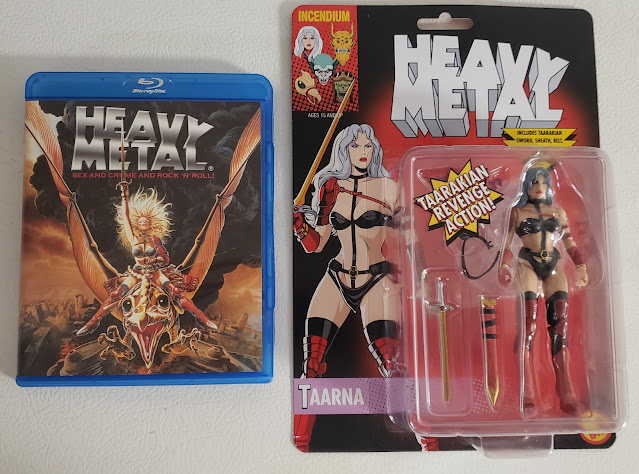
One of the best songs in a stellar soundtrack is Blue Öyster Cult's "Veteran of the Psychic Wars." The song is about Elric of Melniboné or Hawkwind or any Eternal Champion. A solid case is made here that the song, here, is about Taarna. The Veterans of the Psychic Wars might be Eternal Champions, but the Veterans of the Supernatural Wars are Chosen Ones.
Don't forget NIGHT SHIFT The Night Companion is nearing its last few days. Give us some support. If we hit the stretch goal I will give a new Night World and this will keep me out of trouble for a while.
--
Tim Knight of Hero Press and Pun Isaac of Halls of the Nephilim along with myself are getting together at the Facebook Group I'd Rather Be Killing Monsters to discuss these movies. Follow along with the hashtag #IdRatherBeWatchingMonsters.

[Fanzine Focus XXVI] Grogzilla #1
 On the tail of the Old School Renaissance has come another movement—the rise of the fanzine. Although the fanzine—a nonprofessional and nonofficial publication produced by fans of a particular cultural phenomenon, got its start in Science Fiction fandom, in the gaming hobby it first started with Chess and Diplomacy fanzines before finding fertile ground in the roleplaying hobby in the 1970s. Here these amateurish publications allowed the hobby a public space for two things. First, they were somewhere that the hobby could voice opinions and ideas that lay outside those of a game’s publisher. Second, in the Golden Age of roleplaying when the Dungeon Masters were expected to create their own settings and adventures, they also provided a rough and ready source of support for the game of your choice. Many also served as vehicles for the fanzine editor’s house campaign and thus they showed another Dungeon Master and group played said game. This would often change over time if a fanzine accepted submissions. Initially, fanzines were primarily dedicated to the big three RPGs of the 1970s—Dungeons & Dragons, RuneQuest, and Traveller—but fanzines have appeared dedicated to other RPGs since, some of which helped keep a game popular in the face of no official support. Since 2008 with the publication of Fight On #1, the Old School Renaissance has had its own fanzines. The advantage of the Old School Renaissance is that the various Retroclones draw from the same source and thus one Dungeons & Dragons-style RPG is compatible with another. This means that the contents of one fanzine will be compatible with the Retroclone that you already run and play even if not specifically written for it. Labyrinth Lord and Lamentations of the Flame Princess Weird Fantasy Roleplay have proved to be popular choices to base fanzines around, as has Swords & Wizardry.
On the tail of the Old School Renaissance has come another movement—the rise of the fanzine. Although the fanzine—a nonprofessional and nonofficial publication produced by fans of a particular cultural phenomenon, got its start in Science Fiction fandom, in the gaming hobby it first started with Chess and Diplomacy fanzines before finding fertile ground in the roleplaying hobby in the 1970s. Here these amateurish publications allowed the hobby a public space for two things. First, they were somewhere that the hobby could voice opinions and ideas that lay outside those of a game’s publisher. Second, in the Golden Age of roleplaying when the Dungeon Masters were expected to create their own settings and adventures, they also provided a rough and ready source of support for the game of your choice. Many also served as vehicles for the fanzine editor’s house campaign and thus they showed another Dungeon Master and group played said game. This would often change over time if a fanzine accepted submissions. Initially, fanzines were primarily dedicated to the big three RPGs of the 1970s—Dungeons & Dragons, RuneQuest, and Traveller—but fanzines have appeared dedicated to other RPGs since, some of which helped keep a game popular in the face of no official support. Since 2008 with the publication of Fight On #1, the Old School Renaissance has had its own fanzines. The advantage of the Old School Renaissance is that the various Retroclones draw from the same source and thus one Dungeons & Dragons-style RPG is compatible with another. This means that the contents of one fanzine will be compatible with the Retroclone that you already run and play even if not specifically written for it. Labyrinth Lord and Lamentations of the Flame Princess Weird Fantasy Roleplay have proved to be popular choices to base fanzines around, as has Swords & Wizardry.Once per year, The Grognard Files, a North of England podcast dedicated to the games of the late seventies and early eighties, in particular, RuneQuest, hosts Grogmeet a one-day convention in Manchester, again in the North of England. As The Armchair Adventurers, the podcast also publishes its fanzine, just once a year, and typically timed for release at Grogmeet. The first issue, The Grognard Files – Annual 2017, is available as a ‘Pay What You Want’ PDF available to download with the proceeds of the sale of the fanzine will donated to continue the running of Yog-sothoth.com, the best site dedicated to Lovecraft and Lovecraftian investigative horror. More recent issues, The Grognard Files – Annual 2018 and The Grognard Files – Annual 2019 have sadly not followed suit, but for members of the ‘Grog Squad’ and attendees of Grogmeet, both issues continue to serve up thick, syrupy wodges of nostalgia and gaming inspired by their youths in the nineteen eighties. Of course, worldwide circumstances means that there has been no Grogmeet since 2019 and thus no issue of The Grognard Files, but The Grognard Files – Annual 2019 was not the only fanzine to be released at Grogmeet in 2019. Further, that fanzine has gone on to be expanded following a Kickstarter campaign and unlike The Grognard Files – Annual 2019, is still available.
Grogzilla #1 is published by D101 Games, best known for the OpenQuest roleplaying game and the Glorantha fanzine, Hearts in Glorantha. It is undeniably a showcase for what the publisher does and is full of ideas and bits and pieces, some of which are silly, some useful, and some interesting. The issue starts with the silly—‘A Question of Ducks’, which is a poll of Twitter and the Grog Squad—as fans of The Grognard Files podcast are known—and their feelings about Ducks in gaming. The questions are mostly related to Glorantha, the answers varying from series to silly, depending upon how the respondent feels about Ducks. ‘Four Faces of Grogzilla’ is almost as silly, presenting four versions of the not-kaiju for D101 Games’ different roleplaying games—OpenQuest, Crypts and Things, Monkey the RPG, and River of Heaven: Science-Fiction Roleplaying in the 28th Century. Thus, Grogzilla for OpenQuest is a half-dragon, half demonic reptile thing which slumbers deep under the earth, but which cult priests can summon him to rampage across the land once again, whilst hysterical mobs sacrifice to him in order to avoid such a fate! Then for River of Heaven, Robozilla is a giant robot originally intended to be used to help terraform the world of Terrosa, but since stolen by terrorists! More fun perhaps is Monkeyzilla, for Monkey the RPG, the ten-storey high, fire breathing lizard which the Monkey King transformed into to fight the Pagoda Throwing General, which nobody talks about because of all the destruction wrought in the ensuing battle!
The scenario in Grogzilla #1 is ‘Wigan Pigs’. Written for use with Swords & Wizardry, but therefore adaptable to the retroclone of the Game Master’s choice, the scenario is a sequel to The Road to Hell, which is also set during Elizabethan times. It is a mixture of Tudor fantasy and horror, the Player Characters sent by Doctor John Dee to England’s northwest to locate a consignment of missing pigs which should have been delivered to the Irish butcher and purveyor of fine sausages, Mrs Figgins. Such a mundane task hides a nasty secret and a moral quandary for the Player Characters and for Game Master a moment to reflect wonder if the scenario should not have been called ‘The Road to Wigan Pig’ instead. The scenario is also easy to adapt to other systems, but perhaps the most obvious in the two years since the fanzine’s publication is The Dee Sanction.
There are multiple Lovecraftian investigative horror roleplaying games, but Grogzilla #1 offers one more with ‘Outsiders’. This is a game design document, suggesting how the author might design his own Lovecraftian investigative horror roleplaying game were he to do so. First to avoid what Call of Cthulhu does and use those elements of H.P. Lovecraft’s fiction which are in the public domain and then… The result is a scaled down concept, using a simple mechanic with just two six-sided dice, skills which can damage and are therefore harder to use. The Player Characters are actual outsiders, punks and rockers, radical scientists, drifters, hackers, and more, with talents such as Athletics, Science, Gobsite(!), and the like. The opposition consists of Horrors, similarly scaled down, Deep Ones, cultists, and the like, whilst deities—or alien intelligences—are ineffable, unknowable, working their way through their proxies. It would be fascinating to see this developed further by the author, but with access to the fanzine, there is nothing to stop the reader from developing it further.
‘The Six Traveller’s Culture – Magical Questing Gypsies for Mythras’ presents a Culture and its faith for use with The Design Mechanism’s Mythras. A preview of a forthcoming supplement from D101 Games, there is a danger here in presenting gaming content based on other cultures, but this very much appears to have been sensitively done. It provides for their skills—standard, combat styles, and professional, cultural passions, and more. The Six Travellers constantly journey in wagons following routes long established by their heroes and gods, many in the footsteps of the Six, searching for the magical Way Stones, long lost, but capable of fostering trade and safe passage. In their way are the agents of a malevolence known as the Ignorance. Accompanied by notes on the social castes amongst the Six Travellers this culture would make an interesting addition to a fantasy campaign.
Further previews follow. ‘Lost Fools of Atlantis’ is a preview of a roleplaying game about conspiracies and the ridiculousness of conspiracy theories, more a black comedy than a serious game. Again, the game is yet to appear, but the fiction is sufficiently intriguing to wonder what it might be like and actually be about. Lastly ‘The Barbarian at the Gate’ is a preview of Swords Against the Shroud, a rewrite of the Barbarian Class from Crypts and Things for use with The Black Hack, Second Edition. With a high Constitution, a certain fearlessness, initial ferocity in a fight, outdoor survival skills, it is exactly what you would expect in a classic fantasy treatment of the Barbarian. It is well done, with plenty of mechanical flavour and would certainly be fun to play. Between the two, is ‘Pitbull’, a sample NPC, a street ronin, for the Cyberpunk roleplaying game, Reboot. It seems decent enough, but not having seen the roleplaying game, it is difficult to comment further.
Physically, Grogzilla #1 is a ‘rough cut’ affair (note, the version available on Drivethrurpg.com will be different), not quite the ‘deckle edge’ feel, but definitely something with a ‘put together by hand’ feel. Black and white throughout, the cover has pleasing linen finish and the roughness continues throughout the fanzine. Not necessarily to its detriment, but it gives it the amateurish feel of fanzines of old.
Grogzilla #1 is a medley of ideas and previews, not necessarily useful, but nevertheless interesting. The scenario though, ‘Wigan Pigs’, is the exception and easily adaptable.
#RPGaDAY2021 Day 28 Solo

One of the things I have never really been able to do to my own satisfaction is Solo play.
Day 28 Solo
The idea of solo play is one that does go back to the earliest days of RPGS. For example, there are plenty of Tunnels & Trolls adventures that are for solo play. The infamous introductory adventure with Aleena in the Mentzer version of the D&D Basic Red Box is another example.
I had a few of the Endless Quest books, but mostly I got bored with them very quickly. I tried playing the various Zork games from Infocom (yes including "The Hitchhiker's Guide to the Galaxy" game. No. I never got the Babel fish.)
Back in the 80s my High School DM and I spent a lot of time programming a BASIC (as in the computer language) AD&D combat simulator. We could load up to 10 characters and 10 monsters (of an unlimited number on disk) to fight. It worked out rather nicely.
There are now much better D&D experiences in terms of software that can be enjoyed as a solo player but for me they suffer from the same issue that Tunnels & Trolls did/does. Nothing can beat the interaction of others.
I suppose if given the choice of an online game with others using just web meeting software (like Zoom) vs a really interactive video game that is as close to D&D as you can get. I'll take the online game. Not that I don't like video games, they are just not the experience I want when I want to play an RPG. DragonAge and Skyrim feel the closest to me.




